Our 33 Favorite Photobooks by Women and Non-binary Photographers in 2021.



This site is made possible by member support. ❤️
Big thanks to Arcustech for hosting the site and offering amazing tech support.
When you buy through links on kottke.org, I may earn an affiliate commission. Thanks for supporting the site!
kottke.org. home of fine hypertext products since 1998.
Entries for November 2021
The Omicron variant was “already spreading in western Europe before the first cases were identified in southern Africa”. Again, we should be thanking Botswana & South Africa for raising the alarm so quickly here.
A look at how The National Gallery made frames by hand for six massive paintings by Titian. The gold gilding process was interesting…I’d never seen that done before.
Bell Pepper Time Lapse: From Seed to Fruit in 115 Days
Watch as a single seed is plucked from a red bell pepper, planted in soil, and eventually grows into a fruit-bearing plant. I love how plant leaves in time lapse videos always look like they are flapping madly, trying in vain to reach the nourishing light.
This is one of many such time lapse videos on Boxlapse’s YouTube channel — their most popular videos include dragonfruit, tomatoes, and oyster mushrooms.
Artist Sophie Calle took a job as a hotel maid and “with a camera and tape recorder hidden in her mop bucket, she recorded whatever she found in the rooms that she had been charged with cleaning.” Fascinating project (and artist).
Most People Don’t Know How Bikes Work
How do you steer a bike? You turn the handlebars to the left to go left, correct? Actually, you don’t: you turn the handlebars to the right to go left…at least at first. And also? Bikes don’t even need riders to remain upright…they are designed to steer themselves.
If you’d like to play around with your own bicycle geometries, try this web app for analyzing bicycle dynamics.
Mesmerizing Liquid Eyes
“Abstract shots of liquid experiments that aim to mimic the visual complexity of human eyes” is what it says on the tin and I cannot improve upon it in an effort to get you to watch the video. Some of these really do look amazingly like eyes.
TIL that the person who taught Jack Daniel how to make whiskey was an enslaved Black man named Nathan “Nearest” Green. Green went on to become the first master distiller for the Jack Daniel Distillery (but was written out of the story until recently).
Arctic Snow Goggles
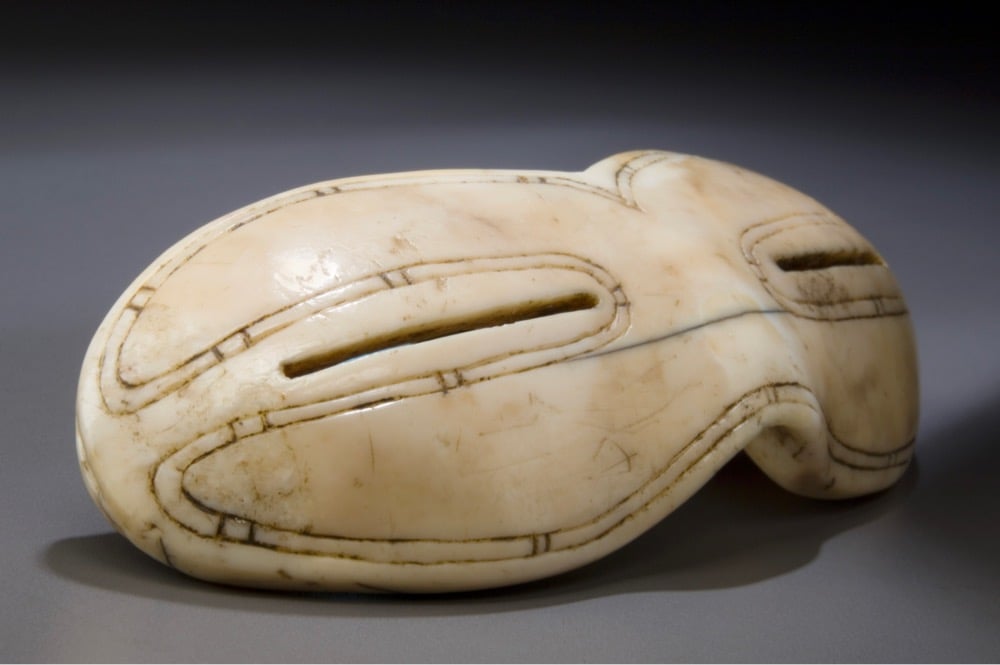

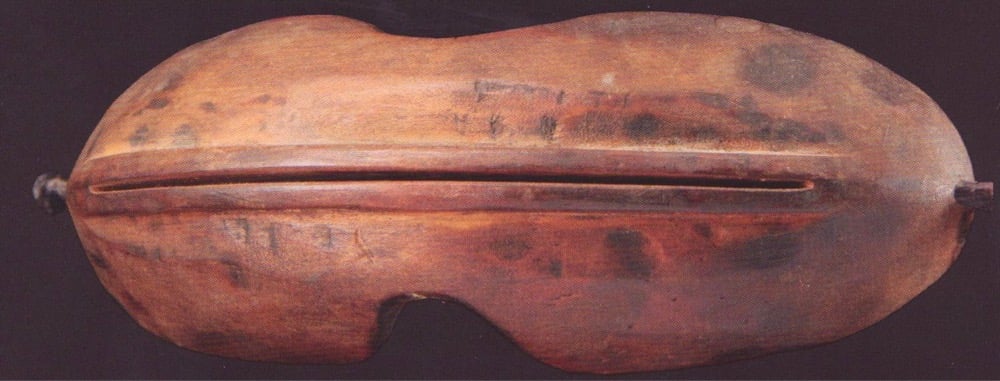
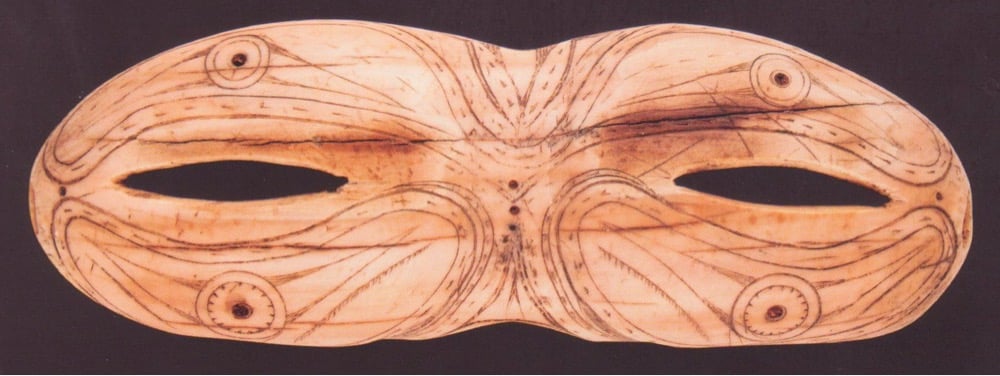

For thousands of years, Yupik and Inuit people have made snow goggles from various materials (bone, wood, whale baleen) to help protect their eyes from the sun and, more importantly, from the sunlight reflected off the Arctic snow. The narrow slits also help with the wearers’ visual acuity. Clive Thompson explains in this piece for Smithsonian:
This style of eyewear can even improve vision, as Ann Fienup-Riordan discovered one day in 2010. An Anchorage-based anthropologist who works with the Yupik people to develop exhibits and books about their culture, she had recently undergone surgery on her retinas, and “the vision in my right eye was still pretty fuzzy,” she says. But when she held the Yupik goggles up to her eyes? “I could see!”
What was going on? It turns out the slit focuses the light, much as a pinhole camera does. As a result, far-off objects appear sharper “and your vision was much, much better,” Fienup-Riordan says. Long before the invention of eyeglasses with glass or plastic lenses, Alaska’s indigenous inhabitants, including the Yupik people, devised their own corrective eyewear. Phillip Moses, a tribal member in Toksook Bay, calls them “Yupik prescription sunglasses.”
Snow goggles were probably the first wearable corrective device to be invented.
A long profile of legendary director Hayao Miyazaki, who is coming out of retirement (again) to make a new film. “He still draws the majority of the frames in each film, numbering in the tens of thousands, himself.”
TIL that the Chevy Suburban has been in production under that same name since 1935. The concept of the “suburb” seems so tied to the 40s and 50s that the name feels almost prophetic to me.
South Africa is being unfairly punished for having one of the world’s best Covid variant detection systems in the world. They should be lauded for warning the rest of us about what is already out there circulating.
Goofy 18th-Century Self-Portraits by Joseph Ducreux

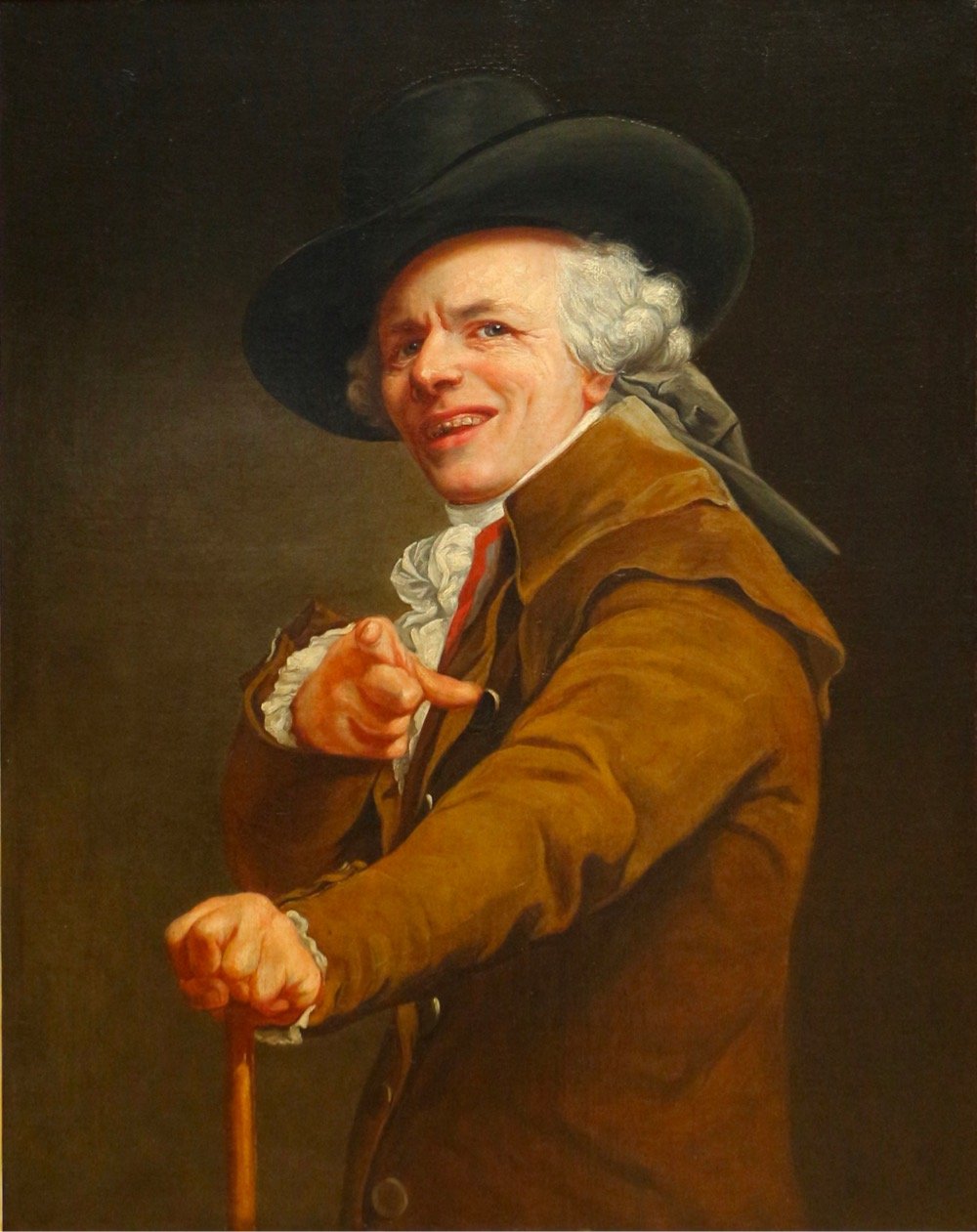



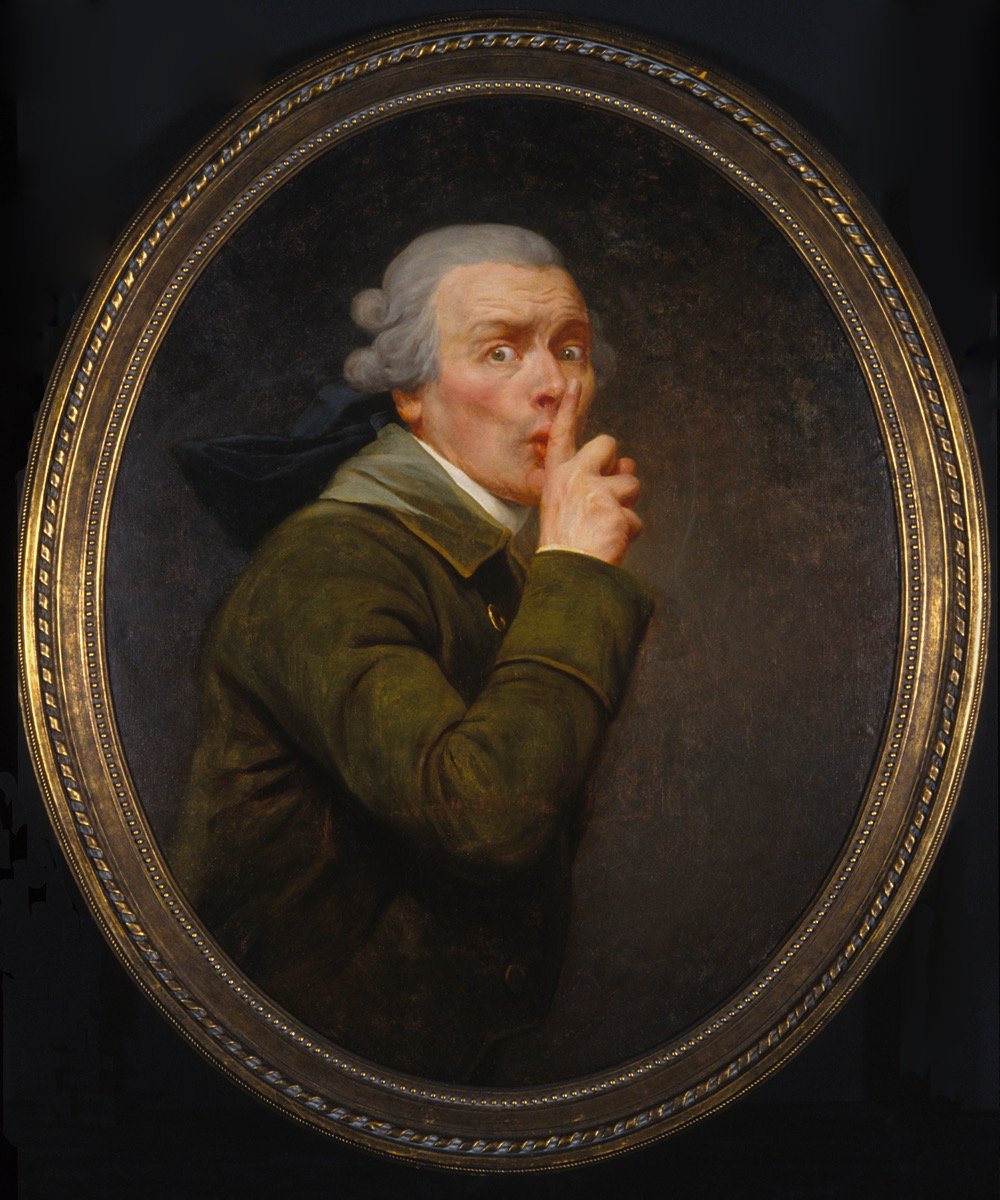
Joseph Ducreux was a French painter active in the latter part of the 18th century — he was a portraitist in the court of Louis XVI and continued his career after the French Revolution. But Ducreux is increasingly remembered for his series of self-portraits that were surprisingly informal for the age in which they were painted. To contemporary eyes, they almost seem to have been painted for use in memes, a purpose for which they certainly have been used.
Jack Dorsey has stepped down as Twitter CEO (again). He will also give up his seat on the board.
An Enslaved American in Paris
In this excellent piece for the NY Times, African American historian Martha S. Jones travels to Paris to search for the signs of someone who came to France as part of a delegation to broker a peace to end the Revolutionary War, an enslaved woman named Abigail who was owned by Founding Father John Jay.
I’ve searched for Abigail a long time now, nearly 10 years. I first puzzled over her life and death as a newcomer to Paris when I stumbled upon the city’s many tributes to American founders. Exiting the Musée d’Orsay and heading to the Right Bank across the Passerelle Léopold-Sédar-Senghor, with the bateaux-mouches tourist boats passing below, I met up with a 10-foot-tall bronze likeness of Thomas Jefferson, another U.S. founder, plans for his Virginia estate, Monticello, in hand.
Hiking along the 16th arrondissement’s rue Benjamin-Franklin, I ventured to the tiny Square de Yorktown to discover that the figure seated high atop a stone plinth was Franklin himself. Fresh from people-watching from a sidewalk table at cafe Les Deux Magots, once the haunt of the 20th-century luminaries James Baldwin and Richard Wright, I made my way around the corner on rue Jacob. Pausing at number 56, I read the pink marble plaque that marks the site of the Hôtel d’York, where three of the men who shaped America’s independence — U.S. Peace Commissioners Benjamin Franklin, John Adams and John Jay — finalized the Treaty of Paris.
These fabled places are, I recognized, whitewashed. There is no mention of the enslaved people, like Abigail, who were bound to labor in the founders’ Parisian households. No site explains that during John Jay’s time in the French capital, while he brokered the new nation’s freedom, he also dealt in the unfreedom of others.
(thx, meg)
Why We Need to Upgrade Our Face Masks — and Where to Get Them. Once more, with feeling: if you’re still using a cloth mask indoors, upgrade your mask (and wear it properly).
Watching creativity happen in real time as Paul McCartney conjures a hit song out of seemingly nowhere. “Paul really has nothing at the 30 second mark – but 45 seconds later he’s got the makings of a hit single.”
We’ve been living in a flu pandemic era since 1918. A universal flu vaccine, which is currently being pursued by many research teams, could potentially rid us of all influenza in one fell swoop.
The Omicron Variant
Last week, a worrisome variant of SARS-CoV-2 burst into the public consciousness: the Omicron variant. The concern among scientists and the public at large is substantial, but it is unfortunately going to take a few weeks to figure out whether those concerns are warranted. For a measured take on what we know now and what we can expect, read these two posts by epidemiologist Dr. Katelyn Jetelina (as well as this one on vaccines).
B.1.1.529 has 32 mutations on the spike protein alone. This is an insane amount of change. As a comparison, Delta had 9 changes on the spike protein. We know that B.1.1.529 is not a “Delta plus” variant. The figure below shows a really long line, with no previous Delta ancestors. So this likely means it mutated over time in one, likely immunocompromised, individual.
Of these, some mutations have properties to escape antibody protection (i.e. outsmart our vaccines and vaccine-induced immunity). There are several mutations association with increased transmissibility. There is a mutation associated with increased infectivity.
That sounds bad but again, we presently do not have enough information to know for sure about any of this. As Jetelina concludes in one of the posts:
We still have more questions than answers. But we will get them soon. Do not take Omicron lightly, but don’t abandon hope either. Our immune systems are incredible.
None of this changes what you can to do right now: Ventilate spaces. Use masks. Test if you have symptoms. Isolate if positive. Get vaccinated. Get boosted.
This Science piece by Kai Kupferschmidt also provides a great overview about where we’re at with Omicron, without the sensationalism.
Whether or not Omicron turns out to be another pandemic gamechanger, the lesson we should take from it (but probably won’t) is that grave danger is lurking in that virus and we need to get *everyone* *everywhere* vaccinated, we need free and ubiquitous rapid testing *everywhere*, we need to focus on indoor ventilation, we need to continue to use measures like distancing and mask-wearing, and we need to keep doing all of the other things in the Swiss cheese model of pandemic defense. Anything else is just continuing our idiotic streak with this virus of fucking around and then finding out. (via jodi ettenberg & eric topol)
The WHO has named the Omicron variant of SARS-CoV-2 a “Variant of Concern”. This really doesn’t look good.
Beautifully Arranged Rock Sculptures




Jon Foreman neatly arranges rocks into colorful sculptures. He also does similar sand, leaves, debris, and shells. You can order prints on his site or check out more of his stuff on Instagram. (via colossal)
The Covid booster shot doesn’t just restore immunity against symptomatic infection, it “elevates protection well above the peak level from two doses”. Booster shot = increased safety for yourself and your community.
The Colorful Winners of the 2021 AAP Photo Competition



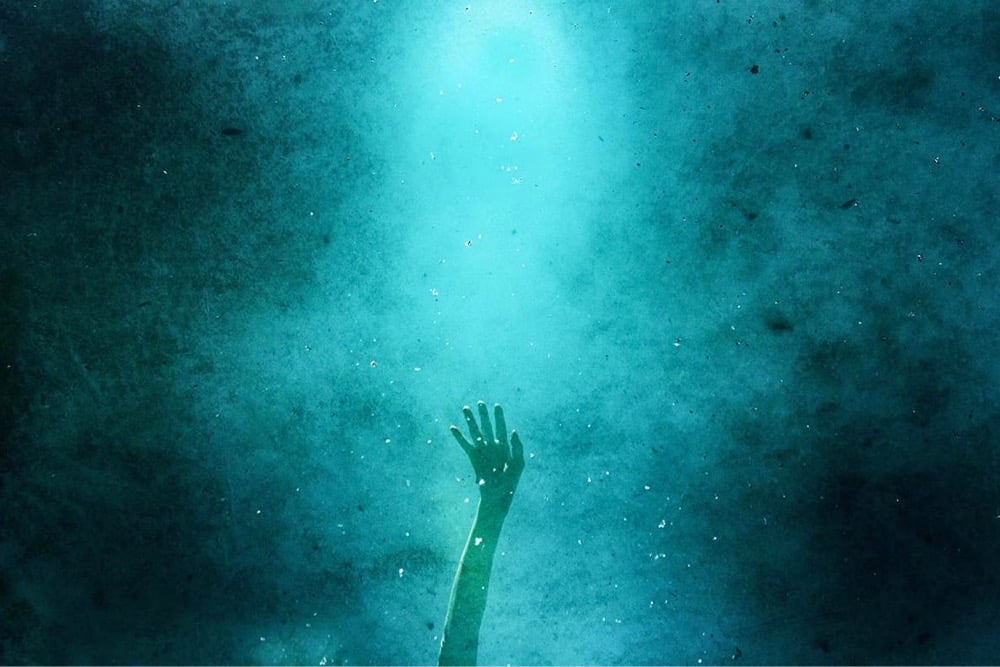
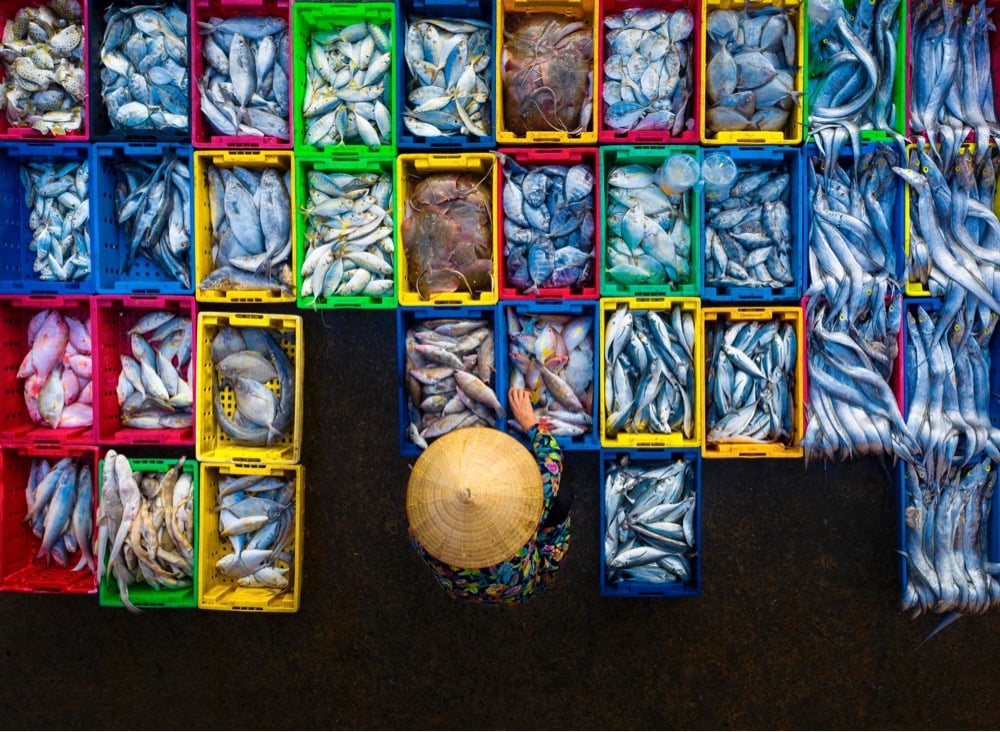
AAP Magazine has announced the winners of their 21st annual photo competition. This year’s theme was “Colors” and I’ve embedded a few of my favorites above (from top to bottom: Miloš Nejezchleb, Vitaly Golovatyuk, Graham Earnshaw, Joanna Borowiec, and Pham Huy Trung).
Engineering a Capable Climbing Lego Car
In this video, a simple Lego car is repeatedly modified to navigate more and more difficult obstacles until it can climb up and down almost anything. This fun exercise also doubles as a crash course in engineering and how to build a capable all-terrain vehicle as it “demonstrates what you need to consider: wheel diameter, gear ratio, 4-wheel drive, tire grip, breakover angle, weight distribution”. (via the prepared)
Is that the Three Identical Strangers with Madonna on the streets of NYC?! (Yes, and it turns out this is from Desperately Seeking Susan.)
Grief Is Unexpressed Love
On The Late Show, Stephen Colbert asked Andrew Garfield how performing and art helps him deal with grief. The relevant bit starts at around the 4:05 mark and continues for three minutes — just give it a watch…there’s not much more I can add to what Garfield says and how he says it.
Update: Colbert is no stranger to conversations about grief — here’s his 2019 conversation with Anderson Cooper. (thx, david)
The Ten Rules of Golden Age Detective Fiction
The Golden Age of Detective Fiction describes a period between the world wars in which a certain style of murder mystery novel took hold, led by the prolific and talented Agatha Christie. Scott Stedman explains about the rise and fall of the genre in today’s issue of Why is this interesting?
It wasn’t until Agatha Christie introduced the world to Poirot that the genre shifted into its strictest and most enduring form: the garden variety murder mystery.
“I specialize in murders of quiet, domestic interest.” —Agatha Christie.
Agatha Christie is the most popular modern writer to ever live (outmatched in sales by only Shakespeare and the Bible). Christie is unrelenting in her ability to surprise — she killed children, popularized the unreliable narrator, introduced serial killers. Still, she was a fiercely disciplined adherent to a form created by her community of fellow writers, developed in the legendary Detection Club (including Dorothy Sayers, Ronald Knox, and the remarkable GK Chesterton). In an age sandwiched between two world wars — her stories brim with pride for a stiff British moral certitude that was impervious to the most heinous acts against it.
A central feature of many of these whodunits was that the reader had access to all the same information as the detective and could, in theory, figure things out before they did. In 1929, Ronald Knox wrote down 10 rules that made this possible:
1. The criminal must be someone mentioned in the early part of the story, but must not be anyone whose thoughts the reader has been allowed to follow.
2. All supernatural or preternatural agencies are ruled out as a matter of course.
3. Not more than one secret room or passage is allowable.
4. No hitherto undiscovered poisons may be used, nor any appliance which will need a long scientific explanation at the end.
5. No racial stereotypes.1
6. No accident must ever help the detective, nor must he ever have an unaccountable intuition which proves to be right.
7. The detective must not himself commit the crime.
8. The detective must not light on any clues which are not instantly produced for the inspection of the reader.
9. The stupid friend of the detective, the Watson, must not conceal any thoughts which pass through his mind; his intelligence must be slightly, but very slightly, below that of the average reader.
10. Twin brothers, and doubles generally, must not appear unless we have been duly prepared for them.
It’s interesting to see how these rules are applied and broken in TV and films these days. I feel like “hitherto undiscovered poisons” and “appliances which will need a long scientific explanation” (not to mention the “unaccountable intuition” of characters) are now regularly deployed, which can lead to feelings of being cheating as a viewer if it’s not done well. (via why is this interesting?)
I follow Stedman here in restating this point…Knox’s original text used a derogatory term.↩
Covid vaccination rates vs death rates in Europe. There appears to be an inflection point around 75%. (The US is currently at 71%.)
A Whole Day of Sunlight at the South Pole
From September to March each year, the Sun never sets at the South Pole. This time lapse video, taken over 5 days in March, shows the sun circling the entire sky just above the horizon, getting ready to set for the first time in months. (via sentiers)
The climate crisis demands bold action. “City governments should purchase an electronic bicycle for every resident over the age of 15 who wants one” and “shut down a significant number of streets to be used only by bicycles”.
Watch an AI Break Tetris
With nearly instant reaction times, superhuman button tapping frequency, and an inability to fatigue, an AI called StackRabbit can play Tetris better than any human player. But how much better? Well, it can play all the way to the end of the game, which…did you know Tetris ended? I didn’t. But before that happens, it plays flawlessly through hundreds of levels while the game itself is throwing up weirdo color schemes and scores from random places in its memory — the game’s creators didn’t imagine anyone or anything would get anywhere close to these levels. Also, I got surprisingly anxious watching this — it was just so fast with so much constant peril! (via waxy)
A ranking of all 63 US National Parks. Yosemite, Redwood, Olympic, and Glacier all score high, but several other well-known parks get dinged for being too crowded.
Stunning, Ultra-HD Short Films of National Parks
For the past 5 years, More Than Just Parks, an organization established by two self-professed “National Park nuts”, have been making short films about America’s National Parks and Forests. Each ultra-HD video is only 3-4 minutes long, extended trailers for the beauty and grandeur of parks like Zion, Grand Teton, and the Badlands and forests like Black Hills, Green Mountains, and Bridger Teton.
You can check out all of the videos on their YouTube channel.
An Online Collection of American Prison Newspapers (1800-2020)
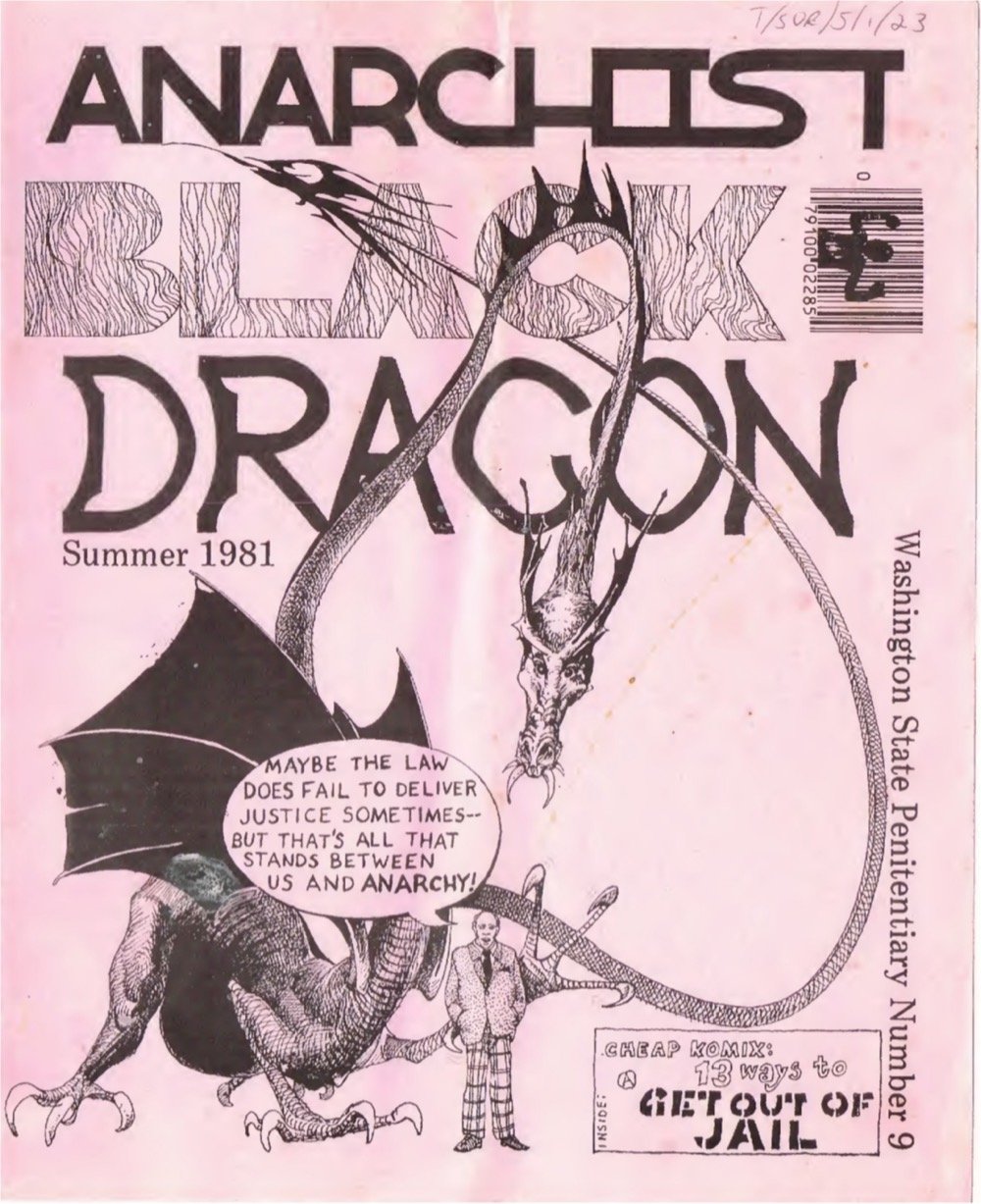
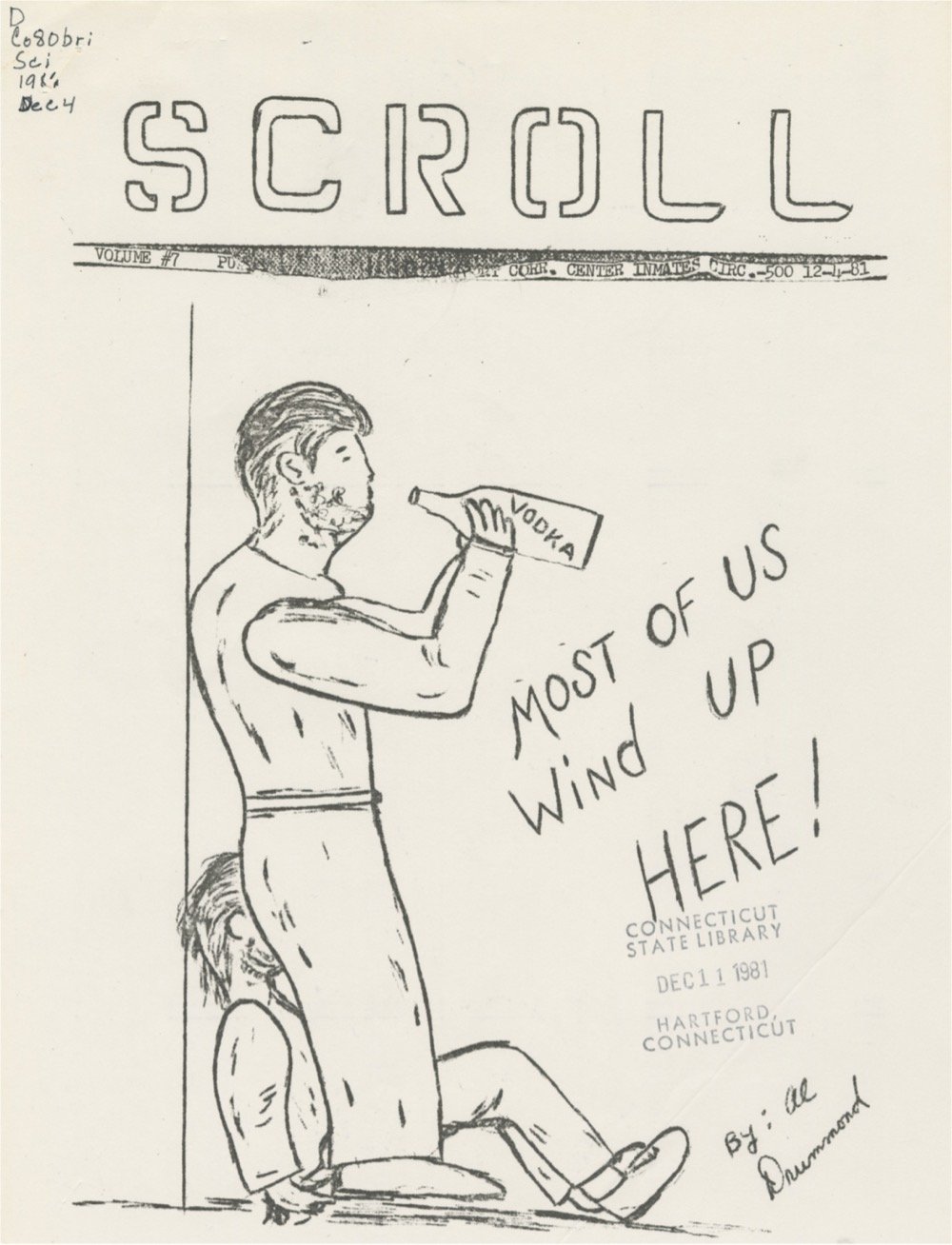
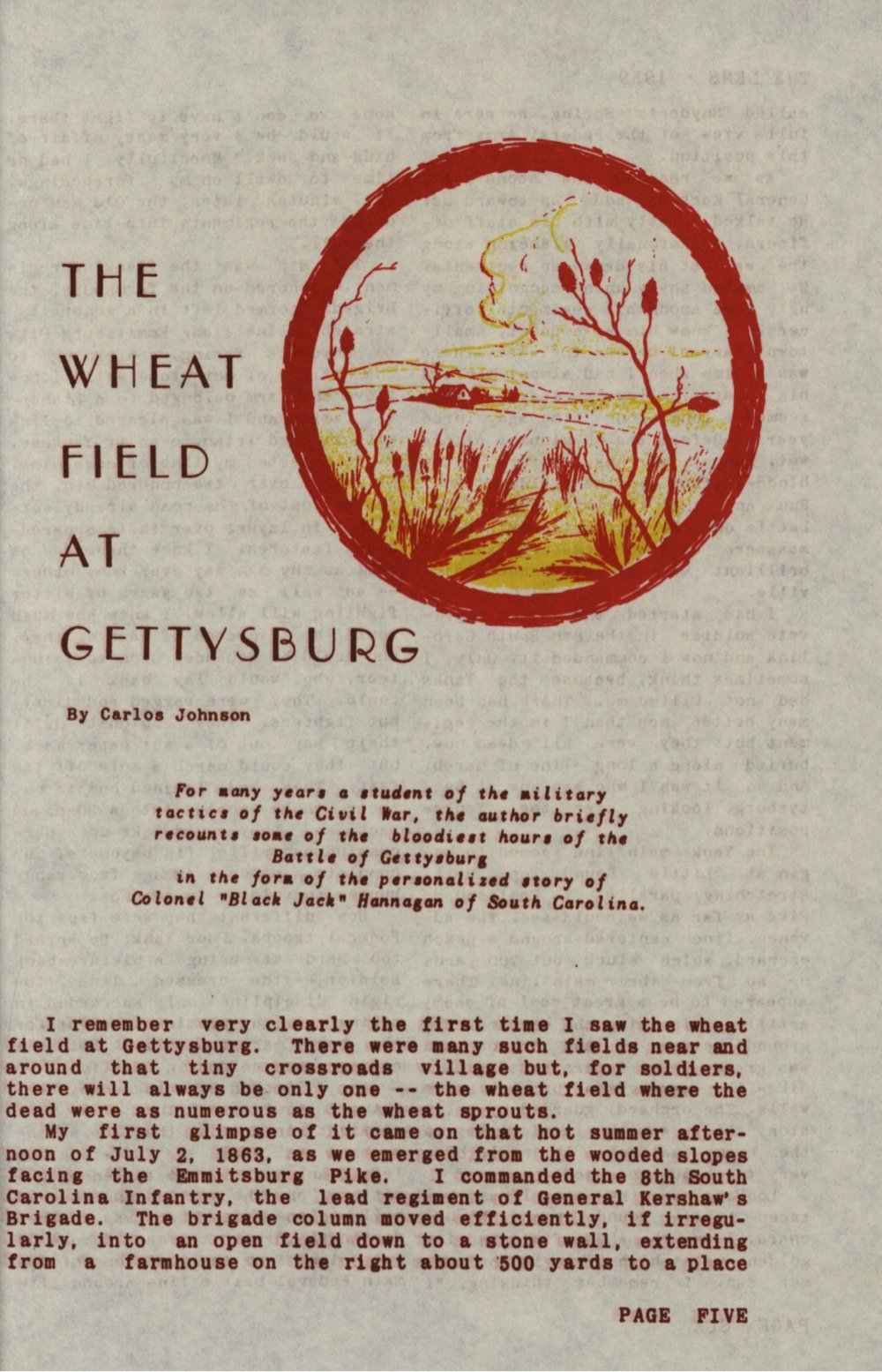
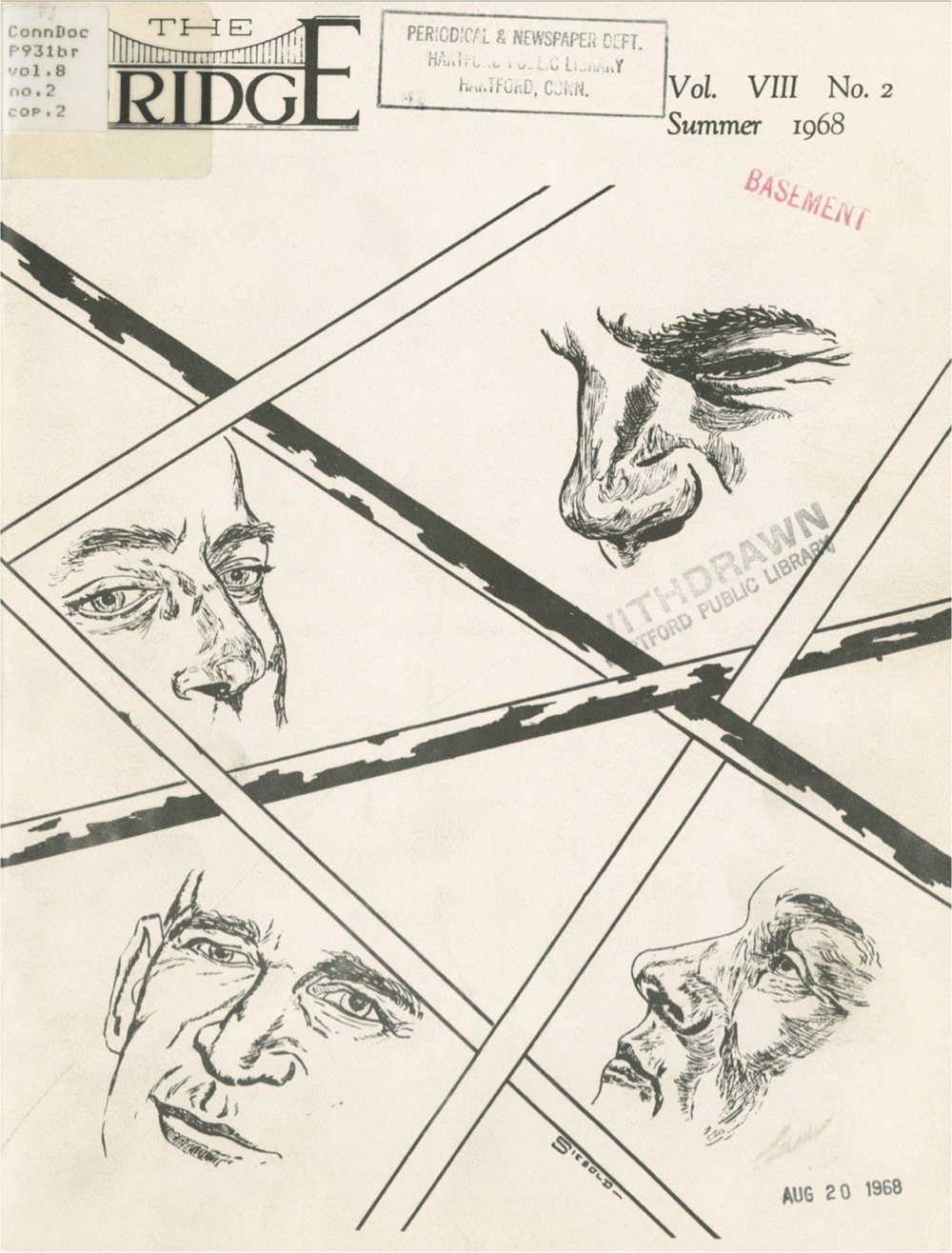

Since 1800, when the first newspaper was published in a NYC prison, over 500 newspapers have been published in prisons around the country. JSTOR is hosting a growing archive of such publications: American Prison Newspapers 1800-2020: Voices from the Inside.
With the United States incarcerating more individuals than any other nation — over 2 million as of 2019 — these publications represent a vast dimension of media history. These publications depict and report on all manner of life within the walls of prisons, from the quotidian to the upsetting. Incarcerated journalists walk a tightrope between oversight by administration — even censorship-and seeking to report accurately on their experiences inside. Some publications were produced with the sanction of institutional authorities; others were produced underground.
(thx, caroline)
The Best Street Photography of 2021
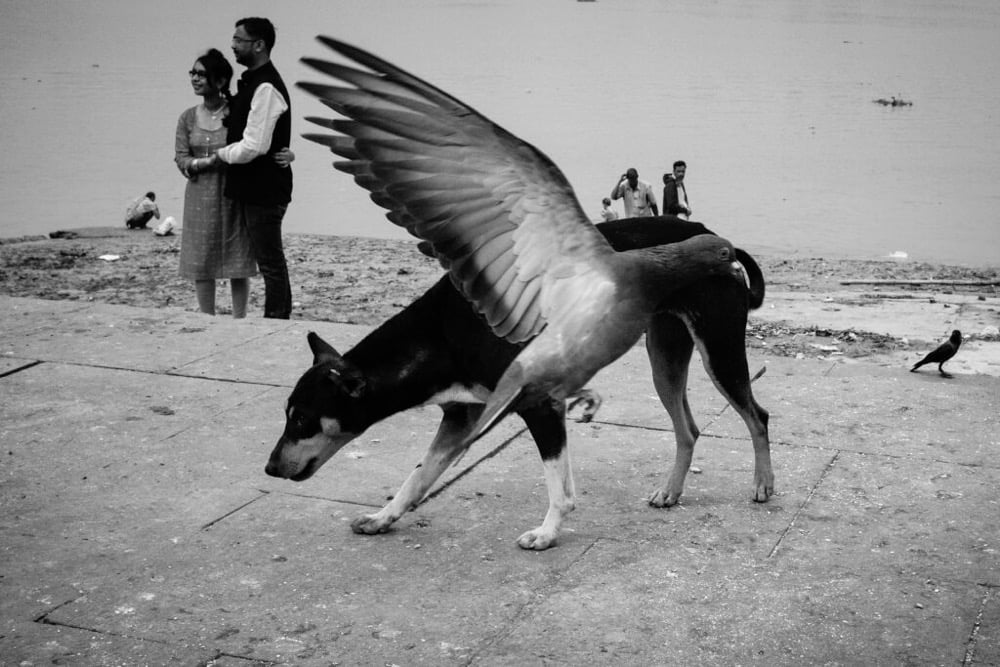


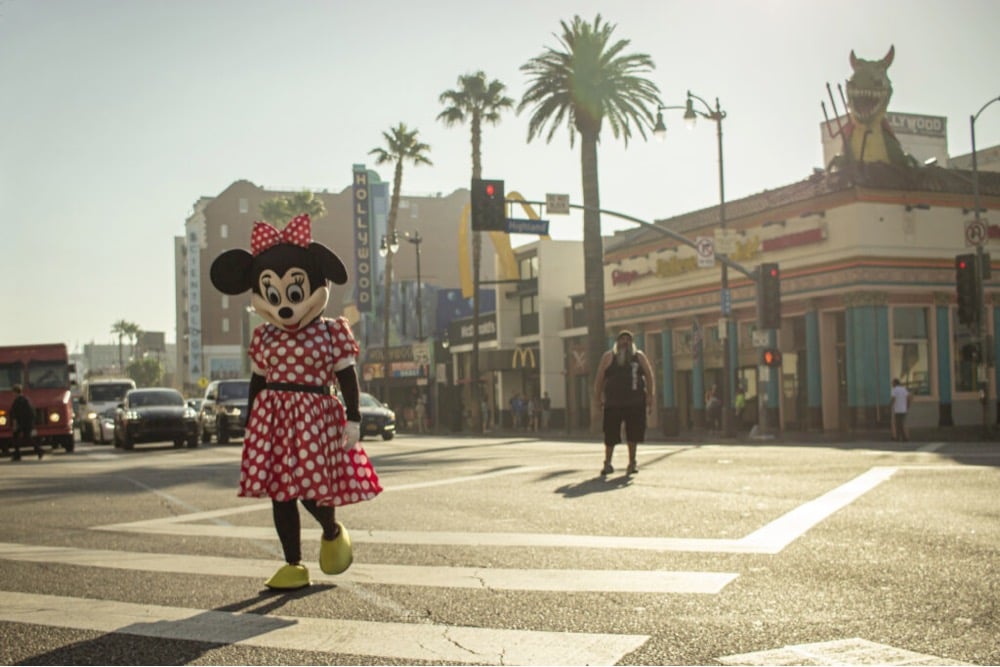
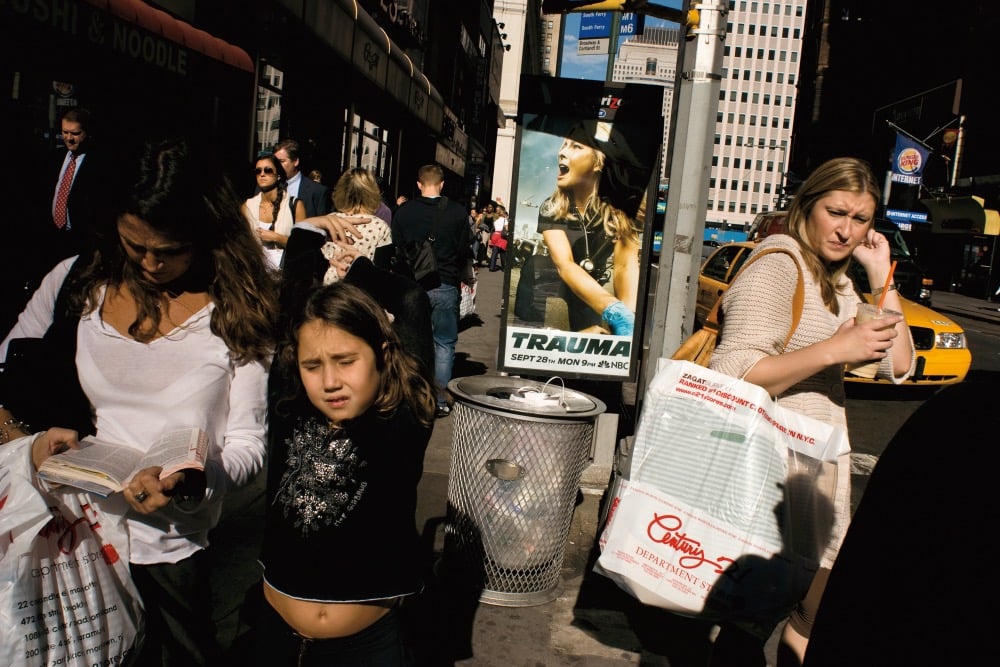
The Street Photographers Foundation has announced the winners of the Street Photography Awards for 2021. What an amazing selection of photos — it was so hard to pick just a few favorites (embedded above). From top to bottom, Subhran Karmakar, Paul Kessel (like a Renaissance painting), Akib Amjad (so reminiscent of this iconic photo by Henri Cartier-Bresson), Andy Hann, and Dimitri Mellos. (via curious about everything)
Succession, the Montessori preschool version. “We’ll go full… fucking… duck-duck-goose!”
One Month of the Sun
Seán Doran took 78,846 frames of data compiled by the Solar Dynamics Observatory over the course of a month and made this absolutely fantastic time lapse of the Sun slowly rotating and burning and flaring. Put this on the biggest, high-resolution screen you can and pretend you’re in the solar observation room of the Icarus II in Sunshine.
See also A Decade of Sun and Gorgeous Time Lapse of the Sun. (via colossal)
One of my all-time favorite online things is someone anonymously posting an iconic Henri Cartier-Bresson photo to Flickr and unaware commenters ripping it apart. “If this is a planned shot, it just didn’t come out right.”
The CDC and FDA approved Moderna and Pfizer Covid booster shots for everyone over 18. Go get your shot if you’re eligible!
A lovely series of drawings and observations by @edithzimmerman of the first few weeks with her newborn daughter. “Rarely have words felt so insufficient.”
Blonde Drawings



CJ Hendry has done a series of photorealistic drawings of hair called BLONDE. You can see some of the work in progress on her Instagram and see it in person in NYC Dec 10-12. Love these. (via @downtown.collective)
The Voice Break Choir
Puberty is tough on everyone but for members of boys’ choirs, it can be especially hard. When their voices start to crack, an instrument that they’ve spent years tuning and perfecting is suddenly thrown all out of whack, shifting from soprano to alto or even bass in a matter of months. Their once-reliable voices become irregular, they don’t know where they are going to settle, and once they finally do, they almost have to learn how to sing all over again.
Often teen boys will quit singing in the choir when their voices crack, but the Stockholm Boys’ Choir works with boys going through these changes, empowering them to perform while they wait for their voices to develop, an essential intermediate step between the high notes of the boys’ choir and the deeper tones of the mens’ choir. In many ways, these challenges mirror the larger struggles of puberty.
“We really thought it was a good metaphor for this time in life,” Holmqvist said. In the film, the choristers perform songs with lyrics derived from their own interviews in the documentary, in which they bare their young souls. “Maybe I’m just weird. / Is there something wrong with me?” the fourteen-year-old Dan sings, worried about his lack of interest in the soccer his classmates play. “I just like other things, / Like drawing figures.”
He’s not alone in his doubts. “I don’t think I’m a typical boy,” Ludwig says, also fourteen, in an interview. “Right now, at this age, I’m hanging around more with girls, since they’re easier to talk to.” The fifteen-year-old Andrey, on the other hand, can’t bring himself to ask out the girl he longs to take to prom. “If she turns me down, everyone will laugh at me,” he frets.
This is a lovely little film.
Nice review by @MKBHD of the R1T, Rivian’s new compact EV pickup truck. Looks interesting but I had a nice chuckle at all the extra storage spots and literal optional kitchen sink.
On Janet Jackson’s Super Bowl wardrobe malfunction. “When a woman’s body and sexuality were violated, the person to blame was the woman, especially if she was a woman of color. She brought it on herself by having a body.”
A Humpback Whale Saved My Life
In this video, whale scientist Nan Hauser tells the story about how a humpback whale she was swimming with saved her from what she calls “the largest tiger shark I’ve ever seen”. It turns out this is not atypical behavior for humpbacks — they’re one of the nicest animals in the sea or on land and have been known to rescue animals from other species from predators.
First-person accounts of animals saving other animals are rare. Robert Pitman, a marine ecologist with the US National Oceanic and Atmospheric Administration, describes a pivotal encounter he witnessed in Antarctica in 2009. A group of killer whales washed a Weddell seal they were attacking off an ice floe. The seal swam frantically toward a pair of humpbacks that had inserted themselves into the action. One of the huge humpbacks rolled over on its back and the 180-kilogram seal was swept up onto its chest between the whale’s massive flippers. When the killer whales moved in closer, the humpback arched its chest, lifting the seal out of the water. And when the seal started slipping off, the humpback, according to Pitman, “gave the seal a gentle nudge with its flipper, back to the middle of its chest. Moments later, the seal scrambled off and swam to the safety of a nearby ice floe.”
Is this behavior in humpbacks altruistic or even compassionate? Or is it “just” instinct?
So are humpbacks compassionate? Scientists, Sharpe tells me, shy away from using the same descriptors we use for humans. “What is exciting about humpbacks is that they are directing their behavior for the benefit of other species,” he says. “But there’s no doubt there are important differences between human compassion and animal compassion.” When I pose the same question to Pitman he concurs. “No editor is going to let me use the word compassion. When a human protects an imperiled individual of another species, we call it compassion. If a humpback whale does so, we call it instinct. But sometimes the distinction isn’t all that clear.”
Some Stories About Legendary Designer Paul Rand

Once upon a time, Jayme Odgers was the assistant to Paul Rand, the legendary Modernist designer who designed some of corporate America’s most iconic logos (IBM, Westinghouse, NeXT, UPS, ABC). Odgers recently shared some stories of what it was like to work with Rand.
One of the most fascinating aspects of Paul Rand’s thinking is that he didn’t believe in endlessly coming up with idea after idea, exhausting all possibilities, which typically eats up one-third of a design budget. He believed ideas are virtually endless-where does one stop anyway? He told me all you need is one good idea — and not all ideas have to be award-winners. A graphic designer needs only to be a professional and offer a professional solution. Easier said than done.
On smaller projects like the Bollingen book jacket and the Aspen poster, Paul simply knocked them out in whiz-bang fashion. With larger projects like creating a logo/mark or branding system, Paul would take that “one decent idea,” then spend the next six months and 100% of the budget refining that single idea to its most perfect visual form and content. There were no sketches, no meetings with the client, no midway reviews, just the most serious investigation, development and design resolution of an idea imaginable.
These stories verge on the hagiographic, but they’re still fun & instructive to read. And the idea that obsessives are difficult to work for comes through anyway. (via @drudesign)
Objects
Objects is a film about the type of person who holds onto things as “a way to keep a treasured record of their lives”. The trailer is embedded above and here is a statement from filmmaker Vincent Liota:
The idea to make Objects came from a phone conversation I had back in 2014 with a long-time friend and collaborator, Robert Krulwich.
We mused about how we had saved objects for years that seemed precious to us, yet had no intrinsic value. Often, we came to own these things accidentally… mementos from an important moment in our lives or objects that evoke a time shared with a loved one. Over the years, these objects gained great significance; some we had each held onto for many decades. To us ‘keepers’ this seemed… natural.
Of course, not everyone shares this quirk. Take both our spouses, who do not hold onto things from the past. For them, objects simply have no resonance or meaning.
Why? What was it that made certain things so important to some people?
Objects is available to stream online at DOC NYC until November 28.
While I’m much more of a person who does not want a lot of possessions, I have keeping tendencies as well — old photos, favorite books I read to my kids when they were tiny, postcards from friends, 90s internet swag, the computer I built the first version of kottke.org on, and nearly every drawing, sculpture, and painting my kids have ever made for me, not to mention keeping online and public every single post I’ve made on kottke.org since March 1998. (via rob walker)
Nice review by @mariabustillos of Bourdain: The Definitive Oral Biography as well as an interview with its author, Laurie Woolever. “It seems clearer to me than ever that the real Bourdain never appeared on TV, and few ever knew him.”
Planktonium
Planktonium is a beautiful short film about the microscopic world of plankton, the tiny sea creatures that form the foundation to sustain all life on Earth.
Phytoplankton (small plant-like cells) are producing half of all oxygen on earth by photosynthesis, like plants and trees do on land. Zooplankton are forming the base of the food chain of aquatic life. Plankton are also playing an important part in the global carbon cycle. The plankton are threatened by climate change, global warming and acidification of the oceans.
The abridged version is embedded above; the full 15-minute film is available to stream/download on Vimeo.
The Infinity Saga: a fan-edit of “every MCU movie from Iron Man to Endgame cut into chronological scene order”. It’s 50 hours long.
Don’t Look Up
Somehow, I missed the teaser trailer for Don’t Look Up a couple months back, but the official trailer just came out yesterday. Directed by Adam McKay (The Big Short, Vice) and starring Leonardo DiCaprio & Jennifer Lawrence (and Meryl Streep, Jonah Hill, Mark Rylance, Cate Blanchett, Tyler Perry, and Timothée Chalamet), Don’t Look Up is a comedy about what happens when scientific fact (in the form of a planet-killing comet) slams into the fantasy worlds of politics and entertainment media. Just because you can’t spin Newton’s laws of motion doesn’t mean you can’t try!
Nothing, absolutely nothing whatsoever, about this movie is related to current events, nope, no sir. *sobbing intensifies* (I love disaster movies and will 100% see this even though it will probably be completely enraging.)
Why Health-Care Workers Are Quitting in Droves. “About one in five health-care workers has left medicine since the pandemic started.”
Where the Rich Use Public Transportation…
I ran across this quote while reading about what makes Tokyo work as a city:
A developed country is not a place where the poor have cars. It’s where the rich use public transportation.
It’s a great quote and the piece attributes it to the former mayor of Bogotá, Colombia, Gustavo Petro. But he never said it (even though the vast majority of the results on Google say he did). The original quote (from 2012) is from another former mayor of Bogotá, Enrique Peñalosa, and it reads:
Una ciudad avanzada no es en la que los pobres pueden moverse en carro, sino una en la que incluso los ricos utilizan el transporte público.
That roughly translates in English to:
An advanced city is not one where the poor can get around by car, but one where even the rich use public transportation.
Peñalosa, who made public transportation a central issue during his two terms as mayor, provided his own English translation in a 2013 TEDTalk:
An advanced city is not one where even the poor use cars, but rather one where even the rich use public transport.
I’m not sure if Peñalosa ever actually said the exact quote at the top of the post. The misattribution to Petro seems to stem from a tweet that went viral in 2012, an episode that foreshadowed how easily pithy information spreads on social media but also how difficult it is to correct misinformation once it’s out there. I expect this post to do almost nothing to change that, but one must tilt at one’s windmills.
I’ve Heard You Have Some Questions About the New University My Friends and I Are Starting. Reader, I chortled.
How Bowling Balls Are Made
I have been a fan of how things are made videos since my Mister Rogers and Sesame Street days, so I was not expecting to be so surprised watching the video above about how bowling balls are made. It’s a ball — how complicated could it be? Well, it turns out that modern bowling balls contain an asymmetric weight block in the middle that looks a little like a car’s starter. Weird, right?
As I started to wonder why it would be advantageous to include such a lopsided core in a ball you want to roll predictably down a lane, I noticed YouTube’s algorithm doing its job in recommending that I watch Veritasium’s recent video on How Hidden Technology Transformed Bowling, which totally explains the wonky weight block thing:
The weight blocks are wonky in a precise way. They’re designed to cause the ball to contact the lane over more of the surface of the ball, giving it more traction once it hits the unoiled part of the lane, which is desirable for expert bowlers looking for a wicked hook. So cool! (thx, mick)
Update: Brendan Koerner wrote a piece for Wired several months ago about Mo Pinel, who revolutionized bowling with the asymmetric cores described in the video above.
Pinel toured Faball’s factory and examined a freshly made core that the company used in its Hammer brand. It had a symmetrical and unexciting shape — the center looked like a lemon, and there were two convex caps of equal size on either side. In a moment that has now passed into ball-design legend, Pinel grabbed the core, which was still soft because the polyester had yet to cure, and sliced off the ends with a palette knife. Then he smooshed the caps back on into positions that were slightly askew, so that the contraption now looked like a Y-wing fighter from Star Wars.
The ball that contained this revamped core, the Hammer 3D Offset, would become Pinel’s signature achievement. “That ball sold like hotcakes for three years, where the average life span of a ball was about six months,” says Del Warren, a former ball designer who now works as a coach in Florida. “They literally couldn’t build enough of them.” In addition to flaring like few other balls on the market, the 3D Offset was idiot-proof: The core was designed in such a way that it would be hard for a pro shop to muck up its action by drilling a customer’s finger holes incorrectly, an innovation that made bowlers less nervous about plunking down $200 for a ball.
(via @danhwylie)
Would 100% watch this movie. Indi Jones and the Looted Statuary.
Winners of the 2021 Natural Landscape Photography Awards




After sorting through 13,000 photographs submitted by over 1300 photographers from all over the world, the winners of the very first Natural Landscape Photography Awards have been announced. A few of my favorite winners are embedded above; from top to bottom, Paul Hammett, Antonio Fernandez, Hans Strand, and Tobias Richter. Hammett’s shot of lightning striking the Matterhorn took 30 minutes of patience to capture:
Setting up my tripod as thunder boomed around me, hopes of getting an image turned to excitement as the storm moved over the Matterhorn.
I was briefly frustrated trying to nail focus and settings in the dark. Occasional flashes of nearby lightning helped me recompose, refine focus and adjust settings. But I cursed each of them as a missed opportunity to get a shot. Once happy with the camera set up, I could take time to fire off numerous 10 second exposures and just watch the show.
Each lightning strike gave me the shivers. When these two hit the summit, I knew I had something special in the camera.
(via colossal)
Americans Need to Learn to Live More Like Europeans. “The U.S. economy could be healthier if it were less reliant on consumption.”
How People Live in the Coldest Place on Earth
YouTuber Kiun grew up in Yakutia, a region of Siberia that is known for having some of the coldest weather on Earth (we’re talking -40°F on a warm day). In this video, she talks about what daily life is like there, including details about the open-air markets (meat & fish stay naturally frozen) and having a car (owners basically have to keep them running all winter). From a Wired article about Yakutia:
Here arctic chill is simply a fact of life, something to be endured. People develop a variety of tricks to survive. Most people use outhouses, because indoor plumbing tends to freeze. Cars are kept in heated garages or, if left outside, left running all the time. Crops don’t grow in the frozen ground, so people have a largely carnivorous diet — reindeer meat, raw flesh shaved from frozen fish, and ice cubes of horse blood with macaroni are a few local delicacies.
See also Visiting the Coldest City in the World and A Photographic Window into the Remote Siberian Territory of Yakutia.
100 Things We’ve Lost to the Internet
In her recent book, New York Times Book Review editor Pamela Paul catalogs some of the things we have lost because of our move to networked digital realms over the past 25 years.
Whatever our emotional response to this departed realm, we are faced with the fact that nearly every aspect of modern life now takes place in filtered, isolated corners of cyberspace — a space that has slowly subsumed our physical habitats, replacing or transforming the office, our local library, a favorite bar, the movie theater, and the coffee shop where people met one another’s gaze from across the room. Even as we’ve gained the ability to gather without leaving our house, many of the fundamentally human experiences that have sustained us have disappeared.
In adapted excerpts from the book, Paul covers filing cabinets, bad photos, and a list of things like privacy, cursive, and the ability to ignore people.
A Secret History of Monopoly. The original inventor of the game, Lizzie Magie, was written out of the story by Parker Brothers because of her anti-capitalist views.
Julia: A Documentary Film About Julia Child
Directed by Betsy West & Julie Cohen (who previously did RBG), Julia is a documentary film that chronicles the life of Julia Child, perhaps the first and still most famous celebrity chef.
Using never-before-seen archival footage, personal photos, first-person narratives, and cutting-edge, mouth-watering food cinematography, the film traces Julia Child’s surprising path, from her struggles to create and publish the revolutionary Mastering the Art of French Cooking (1961) which has sold more than 2.5 million copies to date, to her empowering story of a woman who found fame in her 50s, and her calling as an unlikely television sensation.
The film opened in theaters a couple of weeks ago and is getting great reviews (98% on Rotten Tomatoes).
Craig Mod is taking another long walk around Japan and documenting it for us, chunking it up into short stints in 10 cities around the country. “I like big walks with strange rules.”
Shimmering Bees
As a defense against predators like hornets, these wild bees flick their bodies in unison, creating these mesmerizing and shimmering waves that ward the hornets off. Watch the video…it’s a wild effect.
In the PLoS ONE study, Gerald Kastberger and colleagues focused on the shimmering behavior in giant honeybees, the intriguing, docile, nest-based trait reminiscent of the Mexican waves seen in football stadiums. It was previously known that shimmering was evoked by visual stimuli of predators-particularly hovering wasps. This highly coordinated response aligns hundreds of colony members and displays a remarkable capacity of fast communication within a society, unique in the animal kingdom.
When a giant honeybee colony shimmers, it has two potential addressees: firstly, its nest mates, which coordinate themselves to participate in the shimmering, and which possibly become aroused or alarmed. The authors posit that the members of the group, which are assembled in the dense networks of a “bee curtain” on both sides of the comb, continuously produce and receive information about the state of the colony, reflecting its day-to-day business of foraging, reproduction, reorganization and defensive actions (such as shimmering). Secondly, the potential predators such as wasps and mammals are targeted — these are thought to be influenced by the dynamic visual cues of shimmering.
Teaser trailer for the new Downton Abbey movie (out in March 2022). Always down to spend some time with the Crawley family.
The Beauty of Denis Villeneuve’s Films
Dune. Arrival. Blade Runner 2049. Sicario. The films of director Denis Villeneuve are filled with incredible cinematography. Some of the best shots are showcased in this 6-minute video accompanied by the haunting strains of Max Richter.
This is from a YouTube channel called The Beauty Of, which has many similar videos featuring the cinematography of movies, TV shows, and video games. Like Studio Ghibli movies, If Beale Street Could Talk, The Wire, Peter Jackson’s The Lord of the Rings films, and The Queen’s Gambit.
The Dutch Angle
These days, movies, TV shows, and even commercials all use something called the Dutch angle,1 a filmmaking technique where the camera is angled to produce a tilted scene, often to highlight that something is not quite right. The technique originated in Germany, inspired by Expressionist painters.
It was pioneered by German directors during World War I, when outside films were blocked from being shown in Germany. Unlike Hollywood, which was serving up largely glamorous, rollicking films, the German film industry took inspiration from the Expressionist movement in art and literature, which was focused on processing the insanity of world war. Its themes touched on betrayal, suicide, psychosis, and terror. And Expressionist films expressed that darkness not just through their plotlines, but their set designs, costumes… and unusual camera shots.
This got me thinking about my favorite shot from Black Panther, this camera roll in the scene where Killmonger takes the Wakandan throne:
It’s the Dutch angle but even more dynamic and it blew me away the first time I saw it. I poked around a little to see if this particular move had been done before (if director Ryan Coogler and cinematographer Rachel Morrison were referencing something specific) and I found Christopher Nolan (although I’d argue that he uses it in a slightly different way) and Stranger Things (in the scene starting at 1:33). Anywhere else?
As with Pennsylvania Dutch, the Dutch in Dutch angle is a bastardization of Deutsch (German).↩
“Covid cases are surging in Europe. America is in denial about what lies in store for it.” Reasons include insufficient vaccination (including of kids), waning of immunity, and abandonment of mitigation measures (masks, distancing, etc.)
Just sent out the latest issue of the @kottke newsletter. (It was delayed this morning due to a power outage at my house. Ah, rural life.)
David Fincher’s VOIR
A few weeks ago, I posted about David Fincher’s new project with Netflix. Unfortunately, it’s not a third season of Mindhunter. But, here’s what it is: a 6-episode series of visual essays about movies and filmmaking, not unlike the YouTube videos I post here all the time (many of which you can find under the film school tag).
VOIR is a series of visual essays celebrating Cinema and the personal connection we each have to the stories we see on the big screen. From intimate personal histories to insights on character and craft, each episode reminds us why Cinema holds a special place in our lives.
Tony Zhou and Taylor Ramos of the dearly missed Every Frame a Painting are contributing to at least one of these visual essays, so that right here is reason enough to rejoice. VOIR drops Dec 6 on Netflix.
Recycling Center Made From Recycled Materials
I love this: the local recycling center in the town of Kamikatsu, Japan is itself made of recycled and upcycled materials. Most prominent of those materials are the hundreds of mismatched windows that form the building’s facade:


Brilliant. From Dezeen:
Kamikatsu’s main industry was once forestry, but all that remains of this today are neglected cedar forests. Nakamura’s studio worked with Yamada Noriaki Structural Design Office to design a structure using unprocessed cedar logs that reduce waste associated with squared-off lumber.
The logs are roughly sawn along their length to retain their inherent strength and natural appearance. The two sawn sections are bolted together to form supporting trusses that can be easily disassembled and reused if required.
The building’s facades are made using timber offcuts and approximately 700 windows donated by the community. The fixtures were measured, repaired and assigned a position using computer software, creating a seemingly random yet precise patchwork effect.
Recycled glass and pottery were used to create terrazzo flooring. Materials donated by companies, including bricks, tiles, wooden flooring and fabrics, were all repurposed within the building.
Unwanted objects were also sourced from various local buildings, including deserted houses, a former government building and a junior high school that had closed. Harvest containers from a shiitake mushroom factory are used as bookshelves in front of windows in the office.

The recycling center also includes a “take it or leave it” shop where residents can exchange used goods and a small hotel. (via colossal)
An oral history of the Processing programming language. “We saw a potential for learning how to code in a more essential and foundational way — that was really the vision of Processing.”
Largest psilocybin trial finds the psychedelic is effective in treating serious depression. “29.1% of patients in the highest-dose group were in remission three weeks after treatment, compared to 7.6% of those in the control group.”
How to make a CPU. Step 1: Get a rock. Step 2: Smash the rock.
A 3D Animation of Ocean Depths
The ocean is deep, deeper in some places than Mount Everest is tall. In this 5-minute 3D animation, we take a trip from the shallows of the shoreline to the deepest parts of the ocean, with occasional comparisons to things like the height of the Statue of Liberty, Eiffel Tower, and Mount Everest along the way. See also The Deep Sea. (via open culture)
Robin Sloan, a self-proclaimed “full-fledged enemy of Web3”, writes about the proposed new version of the web. “So, here comes Web3 – and the basic emotional appeal of NEW OPTIONS cannot be overstated.” This is really good.
How to Make a Bespoke Savile Row Suit
As part of an online course on fashion and design, MoMA visited the Savile Row tailors Anderson & Sheppard to learn how they go about making one of their bespoke suits.
Behind a drawn curtain, a master cutter takes an initial series of 27 measurements: 20 for the jacket, 7 for the trousers. From these measurements, the cutter fashions a pattern in heavy brown paper. At the cutter’s table, the cloth is cut in using heavy shears, and the many pieces of fabric are rolled for each garment into tiny packages, which await the tailors.
See also $399 Suit Vs $7900 Suit. And you can check out the rest of the MoMA’s online course Fashion as Design in this YouTube playlist.
The UK may be on the verge of completely eliminating cervical cancer in young women (through HPV vaccines). The US, of course, has been less successful. “I’m very, very disturbed that we can’t do better in this country.”
Four-Day Commute to Work Via Kayak
Adventurer Beau Miles has been focused recently on exploring near where he lives rather than in far-flung locales. He’s walked 56 miles to work a couple of times, adventuring and foraging along the way and recently posted a video of him commuting to work in a kayak. It took him four days. Miles explains:
I’m really fascinated by something as mundane as a commute to work. I think it can offer me a whole bunch of adventure. I’ve already walked to work — I stripped it right back and it was hard and challenging, and really insightful of me and humanity. Now to extend that idea, why don’t I try and paddle to work? I can get to work via the very water that falls on my roof. In doing so, I’m reinventing my idea of adventure. I no longer feel the need to go and paddle great distances down a continent shore, or go to the highest peaks. Your carbon footprint goes through the roof, just so you can go and find yourself, somewhere else. And so I really want to do these things in my backyard now, and why not my boyhood river that I want to reinvent with some adult ideas?
Update: Inspired by Miles’ journey, a high school senior did a kayak commute to school: The 54.5 Hour Commute.
Throughout the trip, Gralyn was offered help from friends and family — everything from transportation to Clif bars — but he accepted none of it. “That would be cheating,” Gralyn says, it would have completely changed the experience. He wanted to experience the full challenge, he wanted to be self-sufficient, and he wanted to know if it was even possible. “Water used to be so common for traveling everywhere and now we never use it. It’s the road less traveled now.”
Update: Back in 2007, Tom Chiarella walked to the mall in 2.5 days.
In the days before I left, everyone told me it was a stupid idea, pointless, fraught with risk. My brother called me an idiot. My golf partners cackled. Many people worried what would happen to me in the city. Another group of friends saw the isolation of the country as more threatening. My wife wanted to forbid it, thinking it incredibly stupid, a blatant invitation to dismemberment, a prelude to disappearance. I told her I’d be okay, that I wasn’t afraid. I was plenty brave enough to handle what came my way. “You think you’re brave,” she said. “You’ve always had a car. It’s easy to be brave when you have a car.”
(via @DavidNir)
A New Jersey arcade maintains a list of former patrons who are banned for life, including now-middle aged adults who were banned in the 80s as troublemaker teens. “You can only get off the list by dying.”
19th-Century Illustrations of the Great Barrier Reef

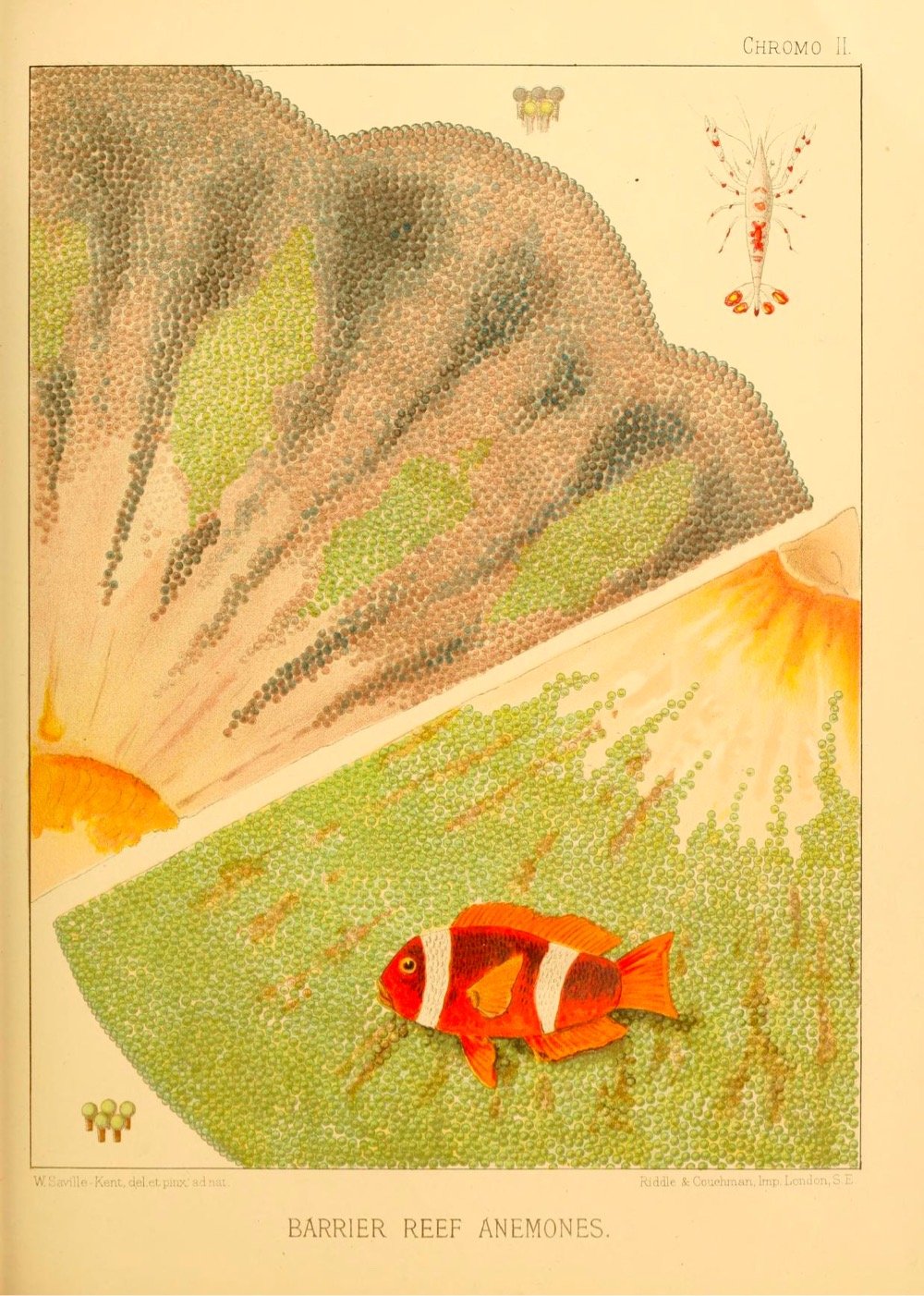
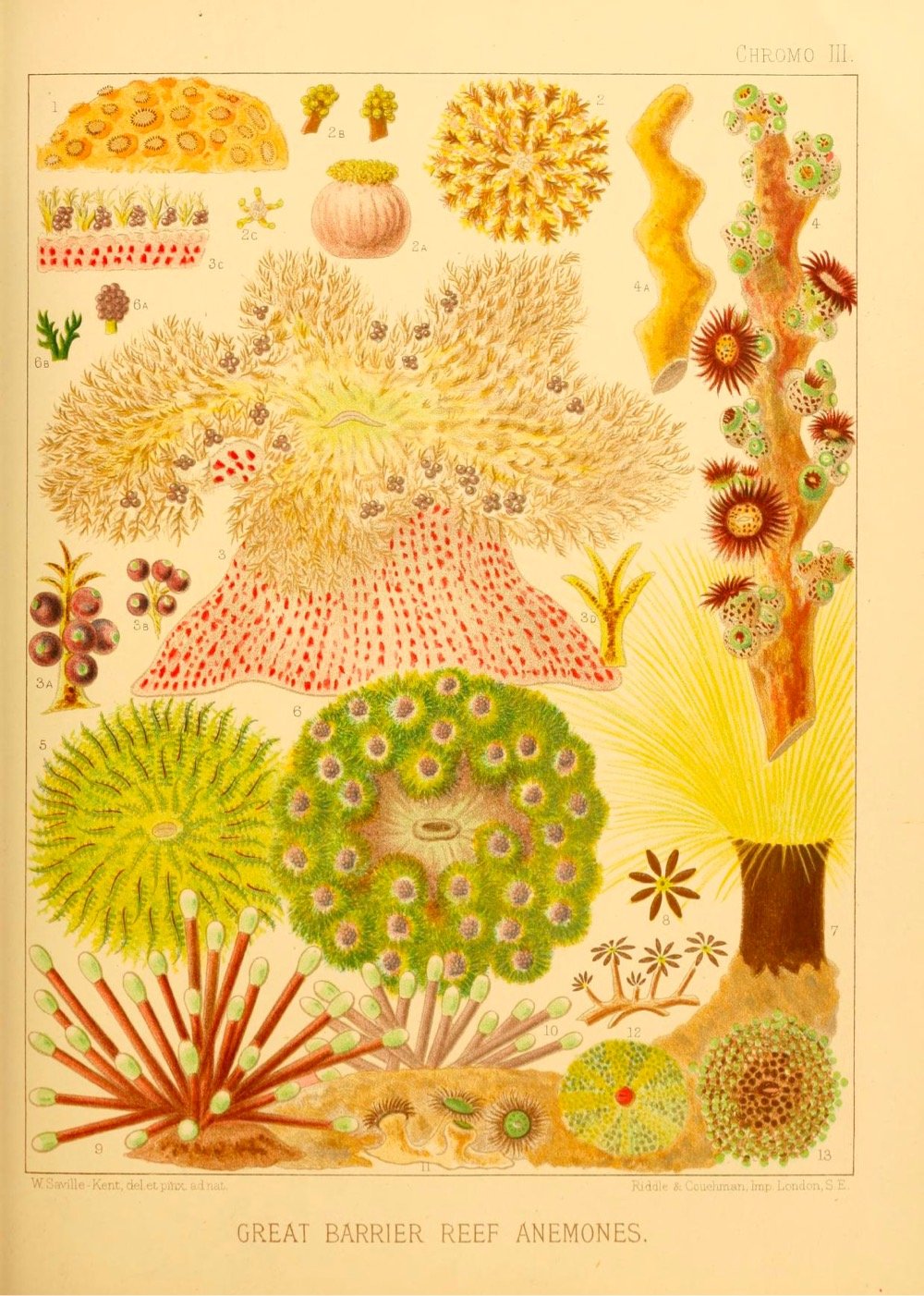
In 1893, English marine biologist William Saville-Kent published his 550-page book, The Great Barrier Reef of Australia: Its Products and Potentialities. Accompanying the text are more than a dozen full-color illustrations of the plants and animals of the reef, drawn from Saville-Kent’s watercolors painted on location. You can peruse the entire book at the Internet Archive or the Biodiversity Heritage Library or take a look at the illustrations at The Marginalian (where prints are also available).
Sharpie Activism
In 2015, Alex Gino published George, a children’s novel about a trans girl named Melissa — George was the character’s former name. Since its publication, many of the book’s fans have grown to dislike the title, saying that it elevated the deadname of the character instead of her actual name. Earlier this year, Gino and their publishing company announced that the title of the book is officially changing to Melissa.
No matter how many people have come to know it as George, we felt it was important to fix the title. What we call people matters and we all deserve to be referred to in ways that feel good to us. Calling the book Melissa is a way to respect her, as well as all transgender people. The text inside won’t change, so the name George will still appear to reflect the character’s growth within the novel, but Melissa will be the first name readers will know her by.
But even before that, readers began making their own modifications to the cover with Sharpies, crayons, colored pencils, and even entire dust jackets. On their blog, Gino explained why the book was called George in the first place and shared some of the amazing art that fans made to correct the title.
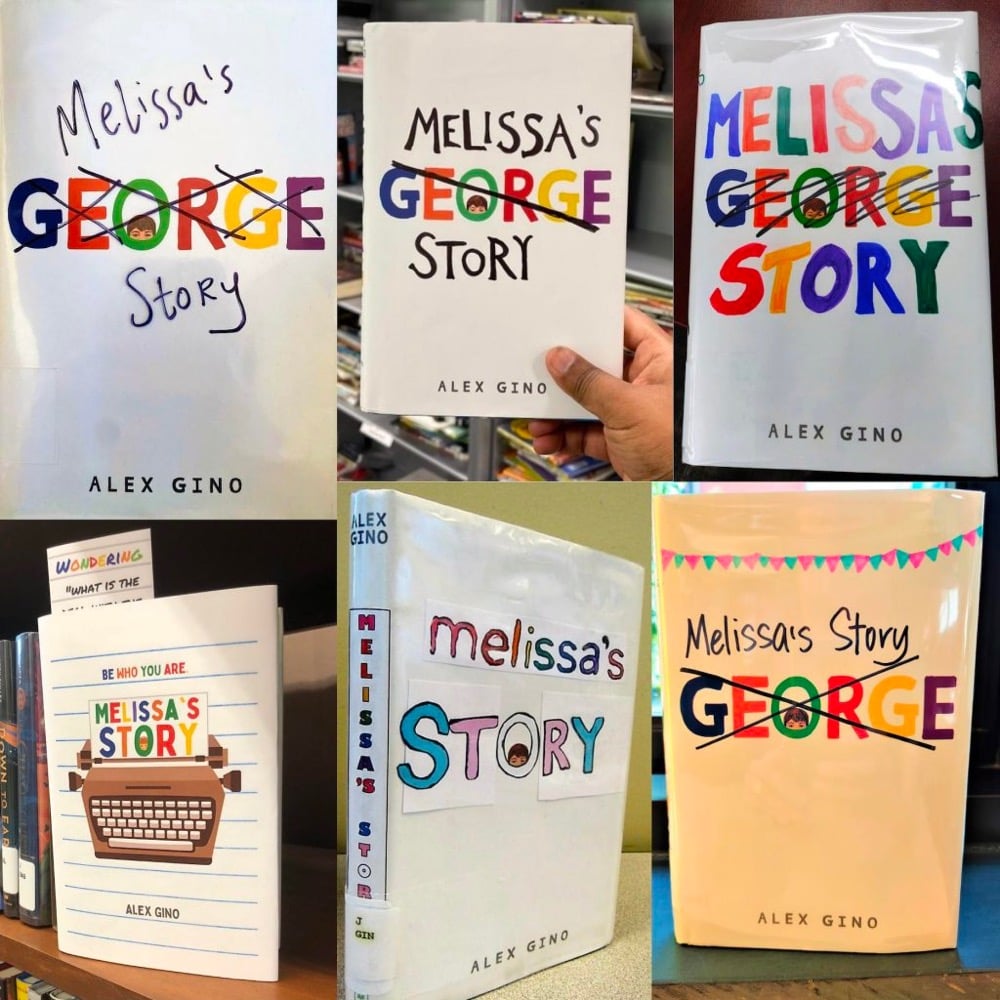

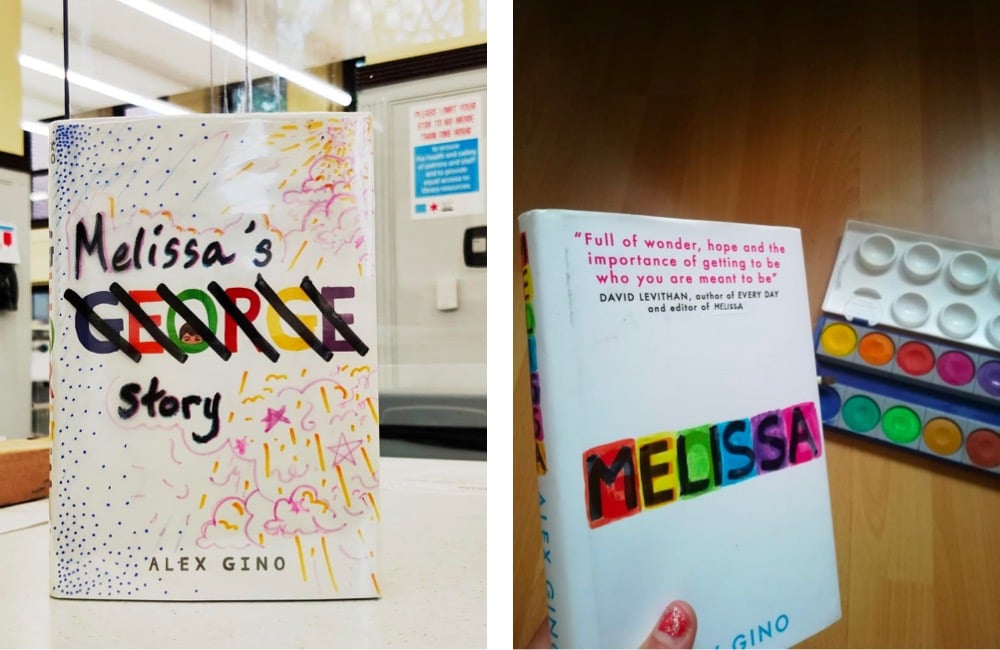
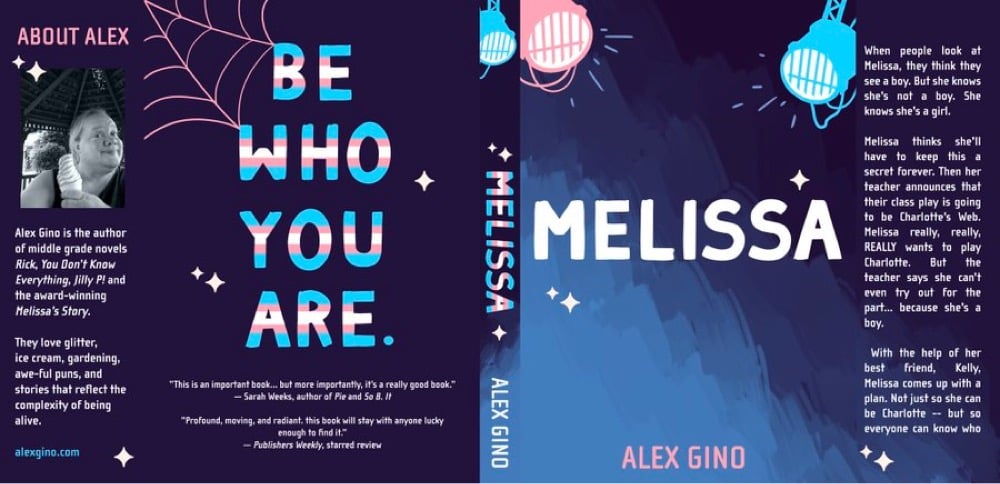

Melissa will be out in April and is available for preorder now. (thx, caroline)
8-Bit Christmas
8-Bit Christmas is a Christmas movie set in the 80s starring Neil Patrick Harris and centered around the Nintendo Entertainment System that seems to be hitting the Christmas Story, Doogie Howser, Stranger Things, Princess Bride, The Wizard, and Goonies nostalgia buttons all at the same time. As someone who was roughly the age of the movie’s child protagonist when the NES came out,1 this movie is directed squarely at me, I will probably watch it, and I cannot see how it can possibly be good. But…maybe?
I am not exactly sure when I got my first Nintendo, but I do know it was early enough to get the Deluxe Set with R.O.B., the Zapper gun, Gyromite, and Duck Hunt. I also got Super Mario Bros. at the same time. My recollection was that I used some money I had saved up from my confirmation to buy it, but I’m not sure that lines up with the timeline. Maybe I got it for Xmas? Whatever the case, it was a big deal…it was by far the most expensive thing I’d ever owned and the first video game system our family had. I played that thing into the ground for years and years afterward.↩
When Nikola Tesla Claimed to Have Invented a “Death Ray,” Capable of Destroying Enemies 250 Miles Away & Making War Obsolete.
Visualizing Auto-Tuned Vocals (Freddie vs. Bublé)
Using the sound visualizations of two tracks, one from Freddie Mercury and the other from Michael Bublé, Fil Henley shows us how to recognize the subtle auto-tuning that has applied to the vocals of some recordings (like Bublé’s in this instance). You can see quite easily that the precise hitting and holding of notes in the auto-tuned version is unnaturally superhuman. (via the morning news)
The Untold Story of Sushi in America. “They set out to build God’s kingdom – and somehow ended up selling America’s raw fish.”
Face-Swapping Collages


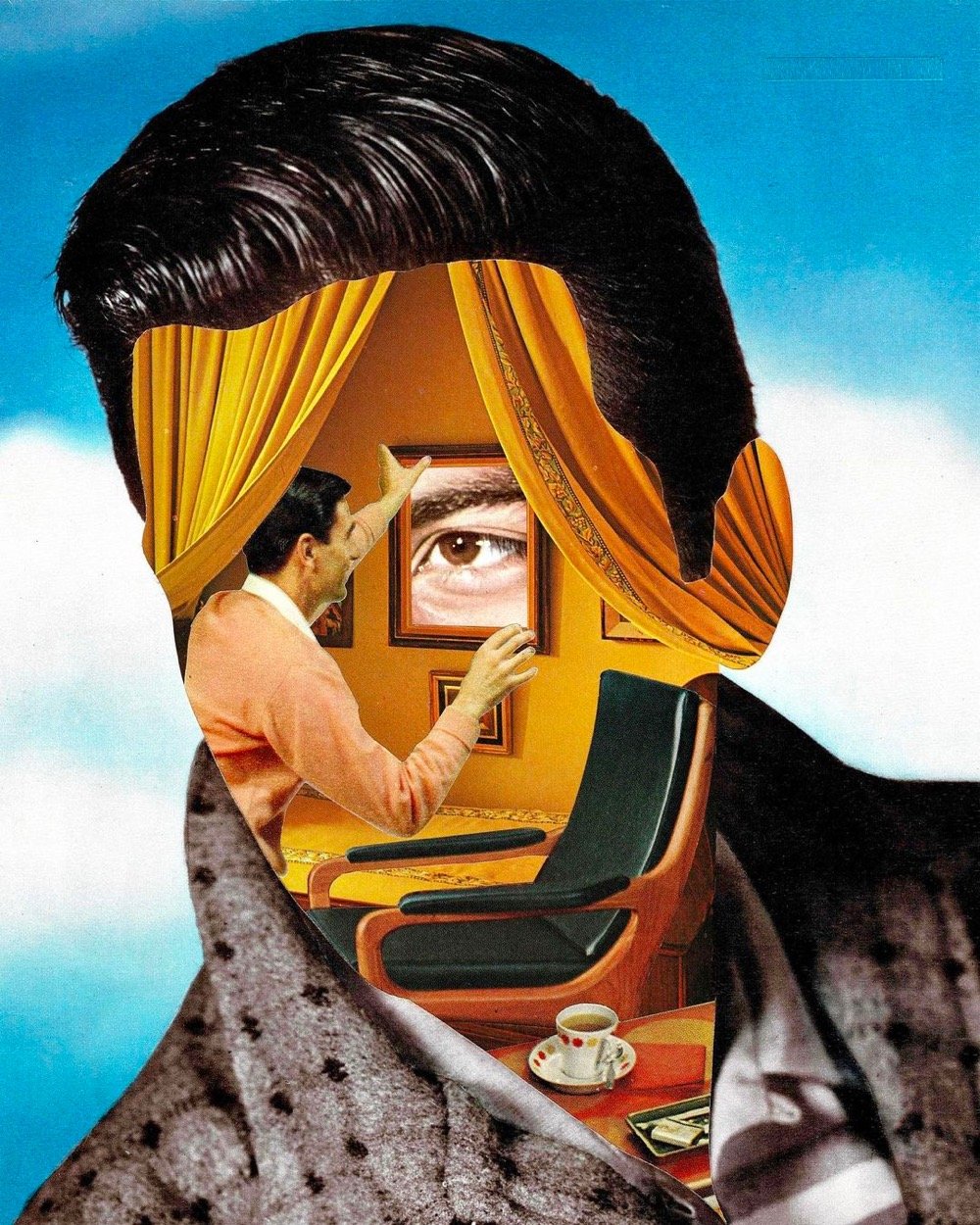
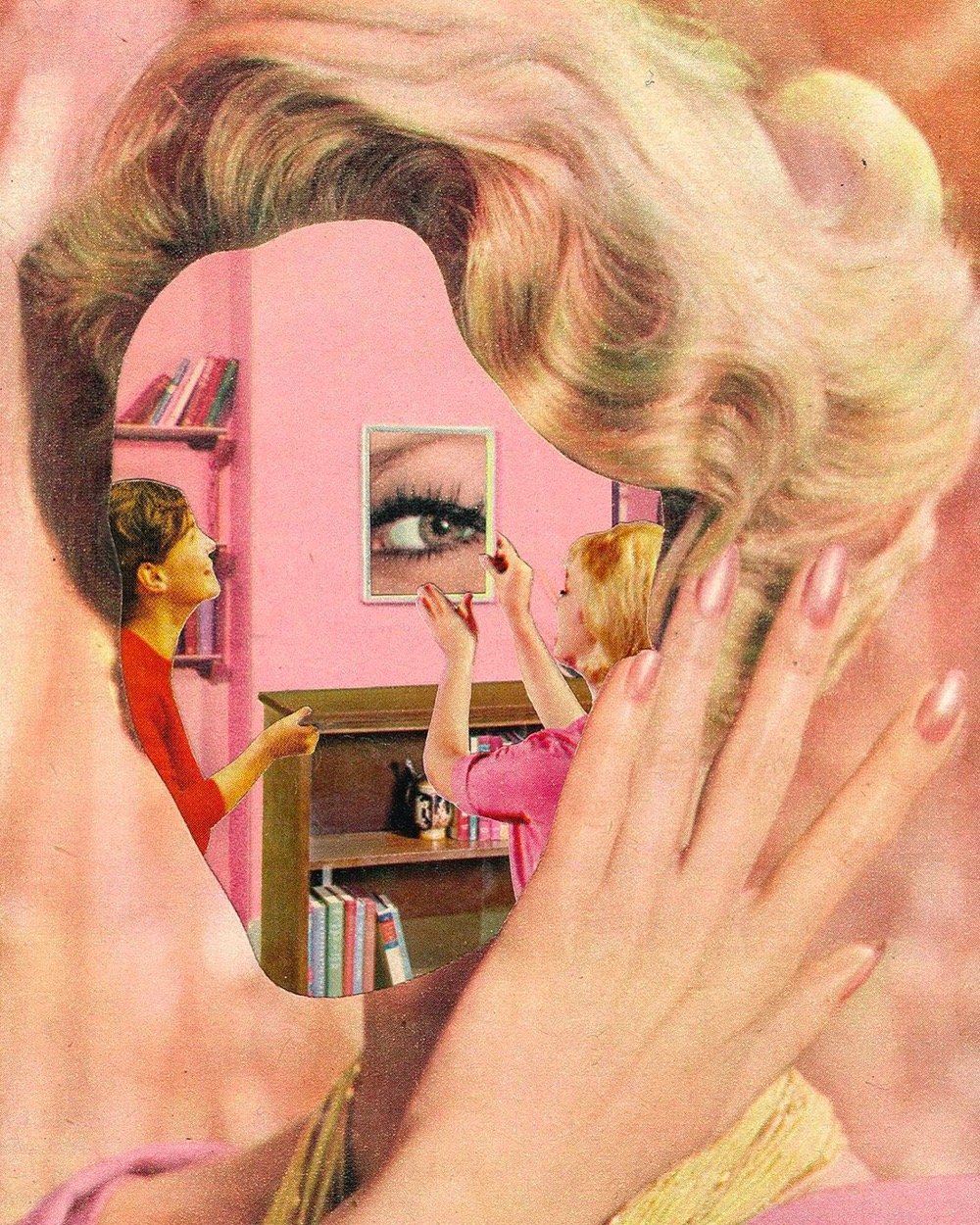
For the past year or so, UK artist Shane Wheatcroft has been making these hand-cut collages that replace people’s faces with various other scenes and objects. It’s hard to tell from these images, but (at least some of?) the collages are 3D. A number of Wheatcroft’s artworks are available for sale on Artfinder. (via jenni)
Alexis Madrigal writes about his experience getting Covid after 18 months of being ultra-careful. “Don’t be fooled: The world’s normal only until you test positive.”
An 8-Year-Old Explains the Metaverse. “One minute you get scammed, another minute you’re having the best time of your life, making billions of dollars.”
A graduate student from India shares his impressions after 2 months in the US. “The very first thing you notice when you land in the US is the, umm, ‘bigness’ of it all” and “Policemen are heavily, scarily equipped”.
U.S. Covid Deaths Get Even Redder. “In October, 25 out of every 100,000 residents of heavily Trump counties died from Covid, more than three times higher than the rate in heavily Biden counties (7.8 per 100,000).”
A parents’ guide to cutting children’s screen time. “Once you have attained mastery [of the martial arts] at the brown-belt level, you are ready to guard your phone or iPad from your children.”
Does Having Kids Make You Happy? “A deep puzzle remains: Many people would have had happier lives and marriages had they chosen not to have kids – yet they still describe parenthood as the ‘best thing they’ve ever done.’”
Great Art Explained: The Mona Lisa (The Extended Cut)
In the most recent episode of the excellent YouTube series Great Art Explained, James Payne expands on an earlier, shorter video on the Mona Lisa with this double-length extended cut.
For Mona Lisa, Leonardo used a thin grain of poplar tree and applied an undercoat of lead white, rather than just a mix of chalk and pigment. He wanted a reflective base. Leonardo painted with semi-transparent glazes that had a very small amount of pigment mixed with the oil, so how dark you wanted your glaze to be depends on how much pigment you use. He used more like a “wash”, which he applied thin — layer by layer. Here you can see two colors of contrast — light and dark. When you apply thin glaze over both of them, you can see it starts to unify the contrast but also brings depth and luminosity. The lead white undercoat reflects the light back through the glazes, giving the picture more depth and in essence, lighting Mona Lisa from within.
This was fascinating, not a wasted moment in the whole thing. I’ve read, watched, and listened to a lot of analysis of the Mona Lisa over the years, but Payne’s detailed explanation both added to my knowledge and clarified what I already knew.
Paper Sculptures of Bleached Coral


Artist Rogan Brown is highlighting what the climate crisis is doing to global coral populations with two recent delicate and intricate paper sculptures of bleached coral. Brown writes:
Here I try to capture the beauty, intricacy and fragility of the coral reef in layers of simple paper. The world’s coral reefs have become symbols of the devastating effects of global warming and man-made pollution. Mass bleaching events occur each year with increasing regularity and if the situation continues then it is inevitable that we will witness the demise of these magnificent biodiverse habitats. My hope is that by reminding us of how astonishing these ecosystems are we may unite to save them.
You can check out the rest of Brown’s intricate paper sculptures in his portfolio or on Instagram. (via colossal)
Hats Off to This Excavator Operator
“Fastest time to remove 6 caps using an excavator” is possibly the world’s most pointless Guinness World Record, but watching record-holder Zhu Fei deftly & precisely operate his massive machine is really something. I bet he could delicately crack an egg without breaking the yolk, pet a kitten without waking it up, or expertly frost a cake with that thing.
See also Lao Pang’s excavator tricks, including slicing a cucumber that’s sitting on a top of a balloon without popping the balloon and this collection of excavator tricks.
Eames Office Celebrates 80 Years of Iconic Design



Eames Office is celebrating the 80th anniversary of its founding by legendary designers Charles & Ray Eames with an exhibition at the Istetan the Space gallery in Japan. Eames Demetrios, the grandson of Charles & Ray, shared a selection of personal highlights from the exhibition with Dezeen. (via moss & fog)
Illustrations from Japanese Fireworks Catalogs (circa 1880s)
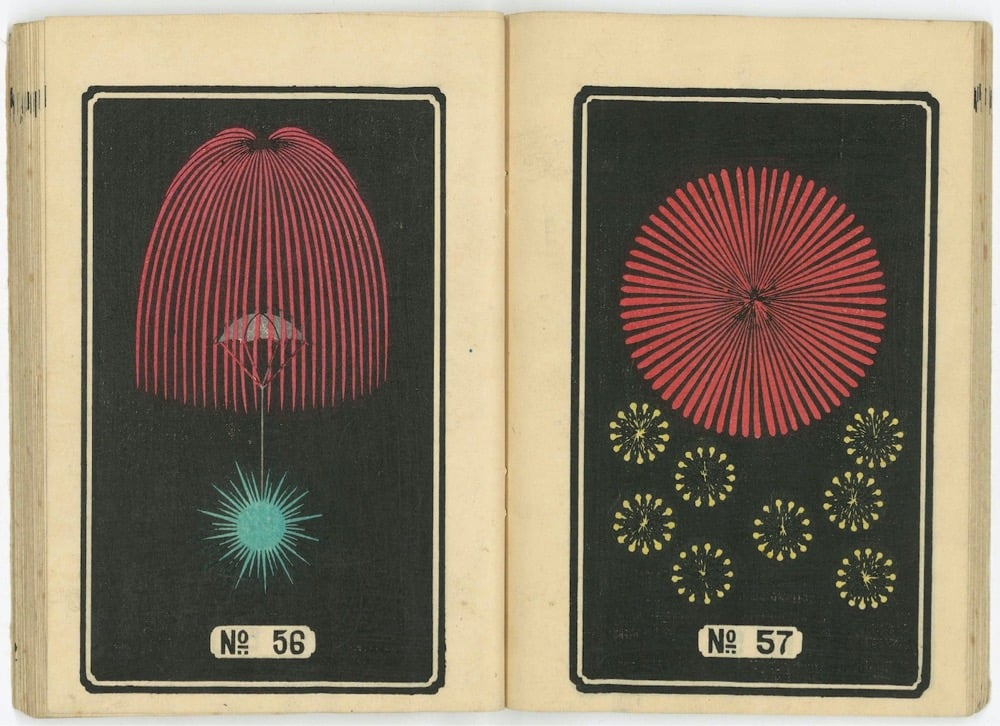
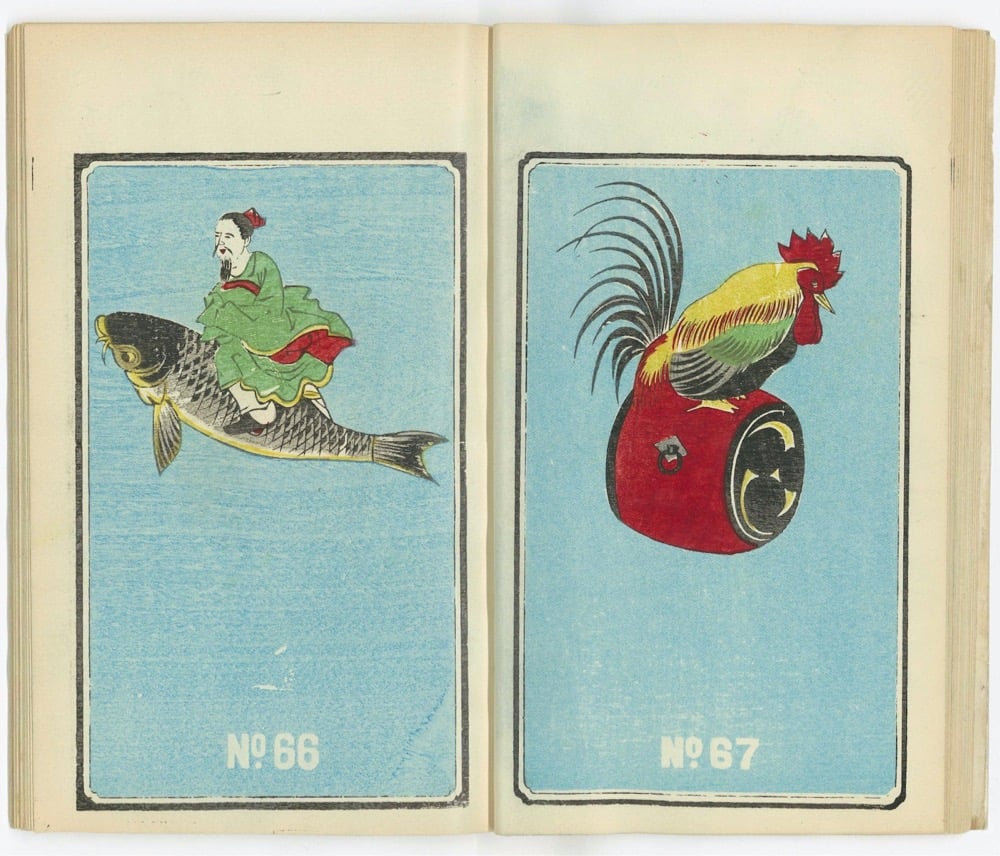
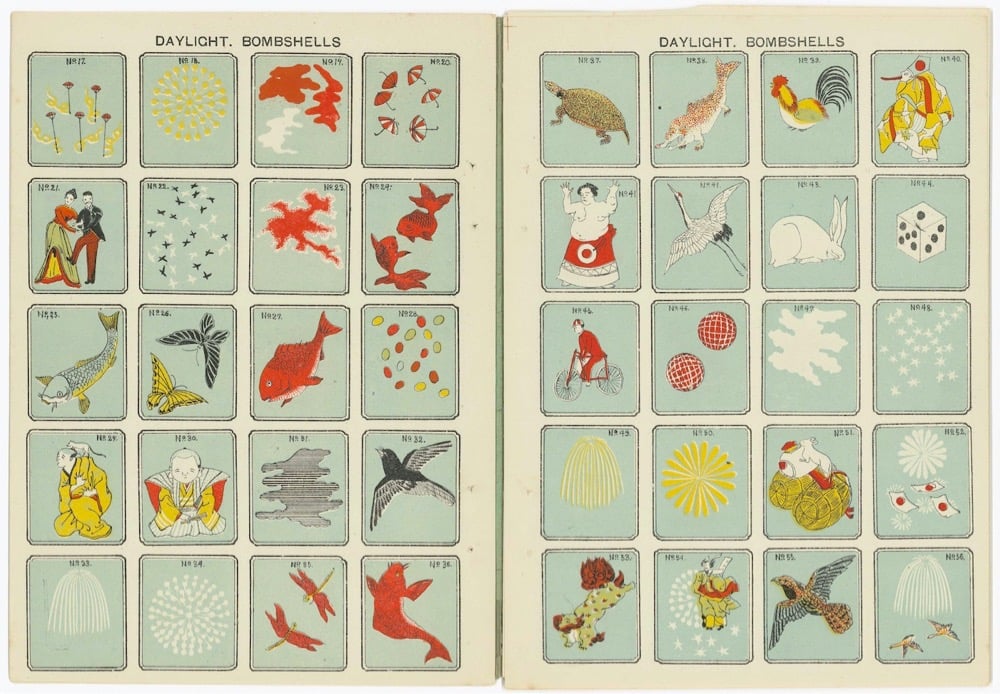
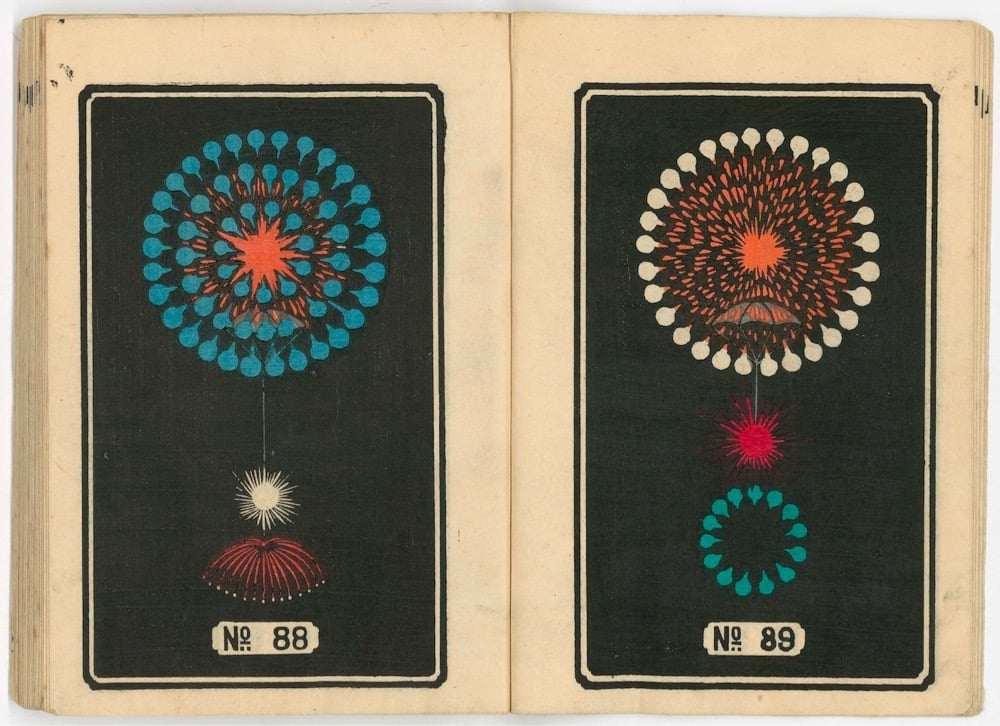
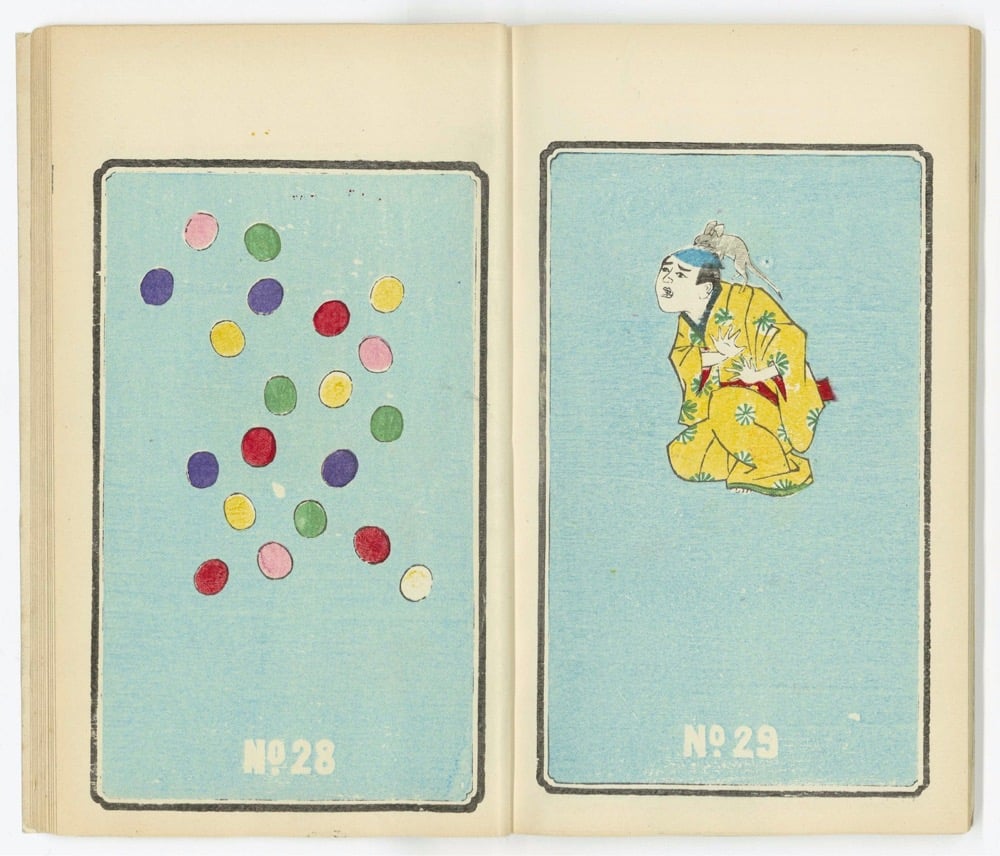
From the excellent Public Domain Review, a collection of illustrations from Japanese fireworks catalogs published in the 1880s.
The spinning saxon, flying pigeons, polka batteries, jumping jacks and firecrackers, squibs and salutes, Aztec Fountains, Bengal Lights, and Egyptian Circlets, bangers or bungers, cakes, crossettes, candles, and a Japanese design known as kamuro (boys haircut), which looks like a bobbed wig teased out across the stratosphere… the language of fireworks has a richness that hints at the explosive payload it references. And yet, anyone who has ever held their camera up to the blazing sky knows that a brilliant firework show can rarely be captured to any satisfying degree. Perhaps this is what makes a nineteenth-century series of catalogue advertisements for Japanese fireworks so mesmerizing: denied the expectations of photorealism, these images are free to evoke a unique sense of visual wonder.
Everything (In Its Right Place)
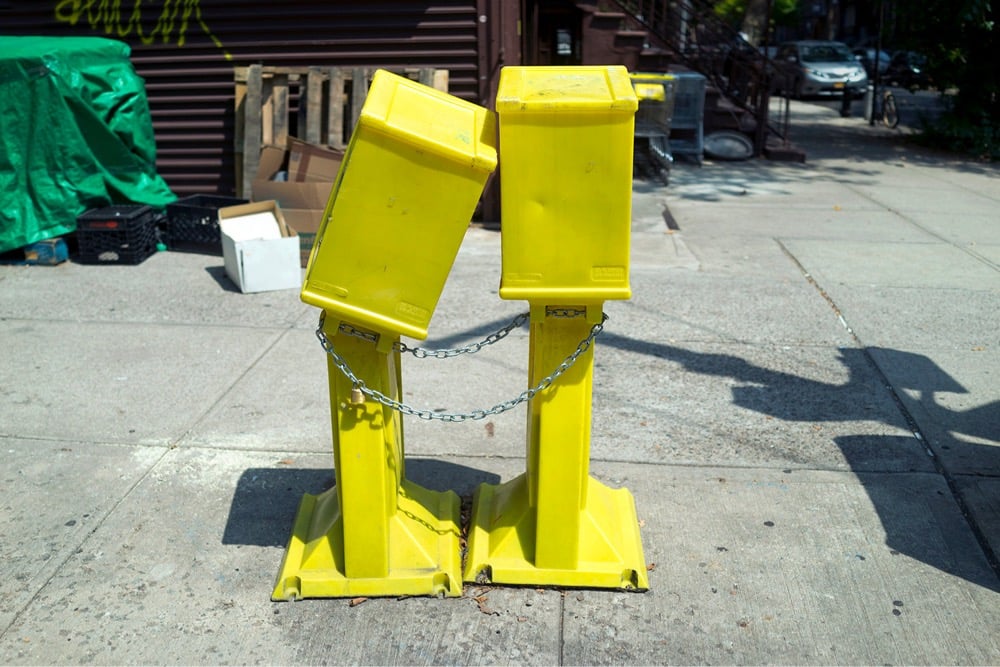


Eric Kogan’s photographs depict these lovely little serendipitous moments — creatures, people, places, and things captured in just the right place in just the right moment. Keep up with Kogan’s work on Instagram. (via the morning news)
Some Friday Mischief
Kottke.org had a little unscheduled downtime yesterday — a few naughty PHP scripts popped up where they shouldn’t have, a situation that’s now been locked down. Out of an abundance of caution (as they say), the folks at my wonderful host, Arcustech, rolled the site back to the most recent backup, with the side effect that many of the posts from last week went missing. I’ve restored those posts but the Quick Links are still missing from the site (you can find them on Twitter). For those of you reading via RSS, you’re probably seeing multiple entries coming through — that should be cleared up soon.
Obviously not a great situation and it was exacerbated and delayed by me having to simultaneously deal with some other urgent, irritating business in my life. (One crisis at a time, please, universe.) My apologies for the disruption.
Update: Ok, all the Quick Links should be back on the site now.
Wes Anderson: Sharp & Precise, Not Twee
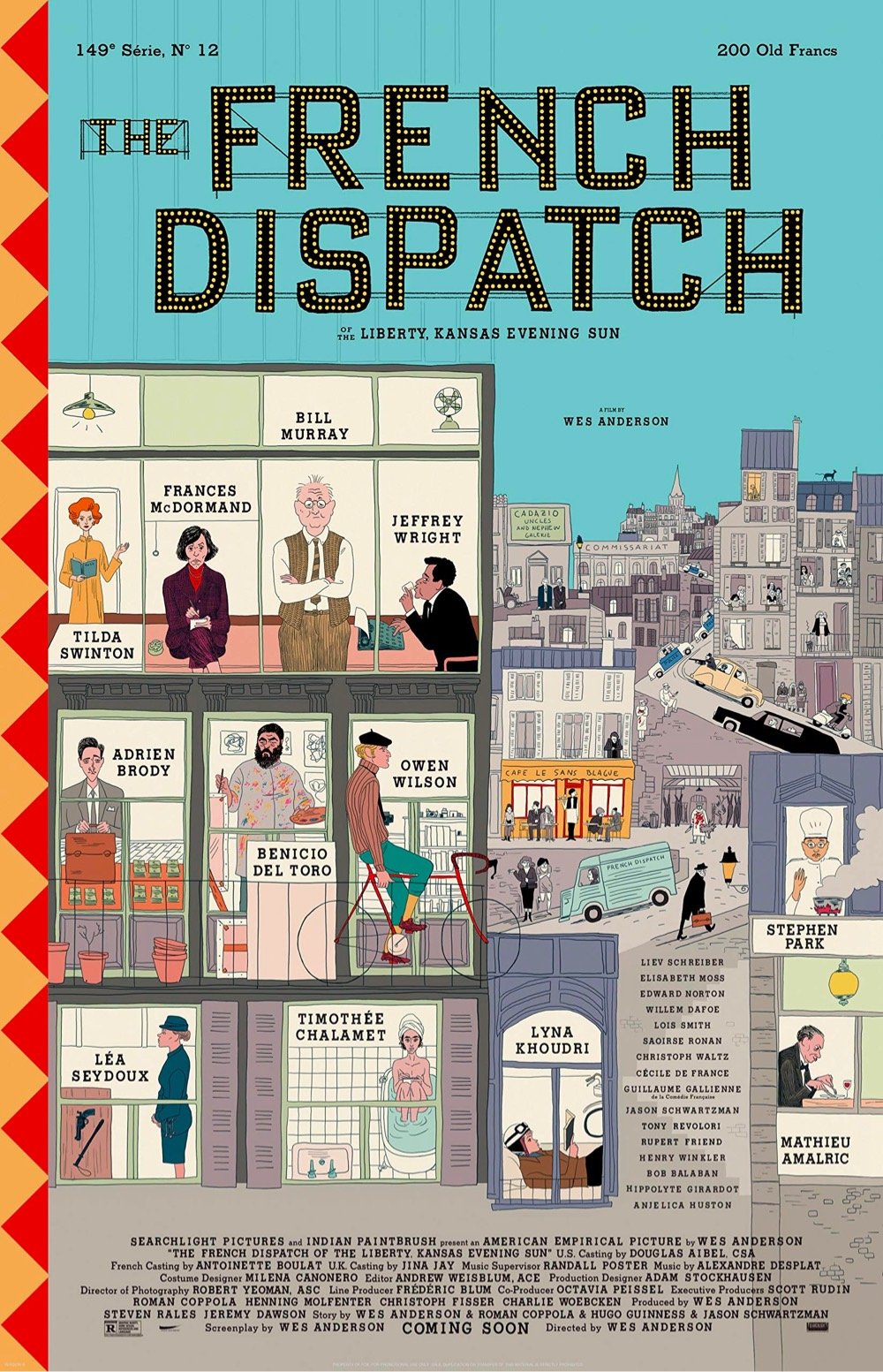
I saw The French Dispatch last night and really liked it. Then I read Cassie da Costa’s review/appreciation of the film and I think I like it even more now.
With all due respect to Ganz and other dissenting critics, who are well within their rights to dislike Dispatch or the general direction Anderson’s work is headed in, there is nothing childish or superficial about the film. The similarly maligned-for-her-tastes Sofia Coppola showed us in Marie Antoinette that teas, cakes, and even childhood (or teenagedom) are not frivolous subjects, not even when rendered with ostentatiously luxurious styling. Such exercises in not plainly depicting a set of ideas but entangling them in a detailed visual makeup are best done in films, and for good reason — a medium as prolonged as it is abridged, it ideally requires audience members’ sustained and close observation.
“Sustained and close observation” nails it. I wasn’t bored for a single second during The French Dispatch — more like rapt. I love films that reward paying attention — it’s a form of love, don’t you know.
Has anyone tried the 4-7-8 breathing technique to fall asleep? I have no problem going to sleep at night but if I wake after 2am, it’s almost impossible for me to get back to sleep.
Mid-Century Modern Matchbox Labels From Eastern Bloc Countries (1950s-1980s)
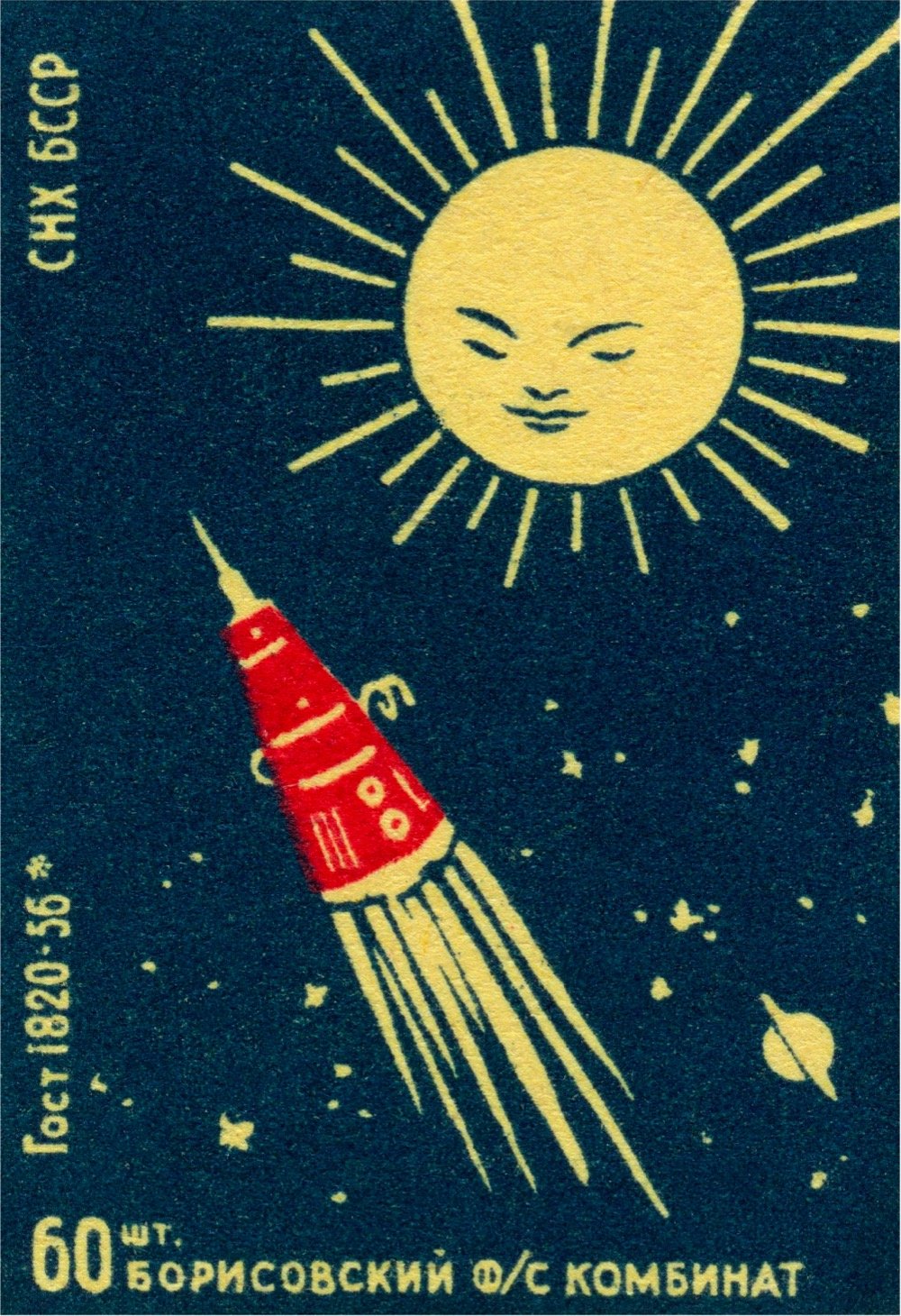

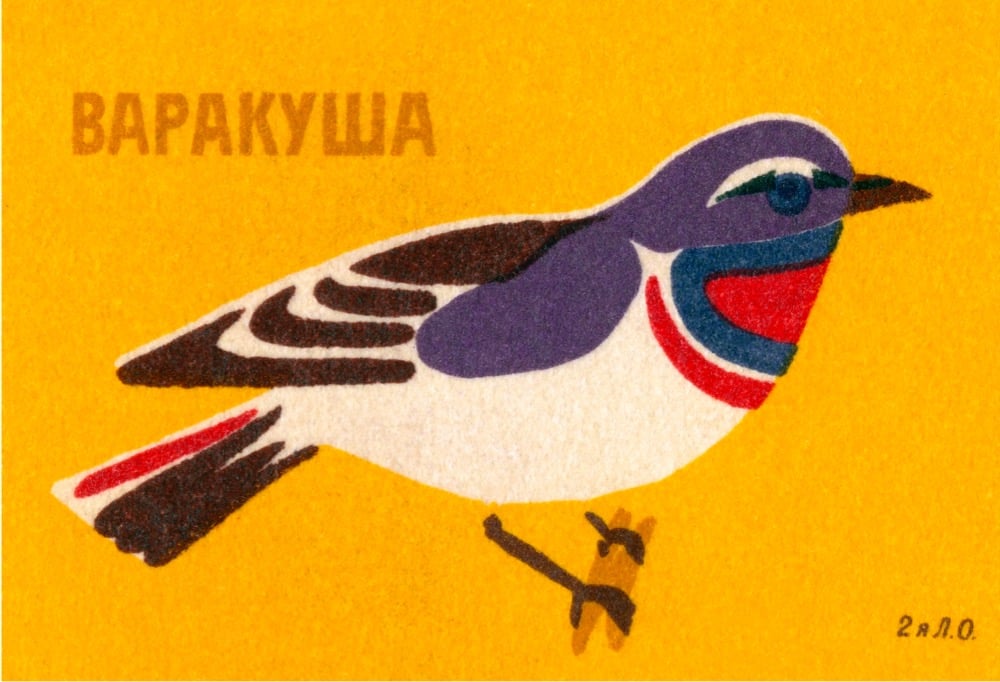


Look at how beautiful these mid-century matchbox labels are — they’re from Eastern Bloc countries (Poland, Czechoslovakia, Russia, etc.) from the 1950s to the 1980s. These are part of a collection by Jane McDevitt. Prints of some of these labels are available and there’s also a book.
Meet the Liverbirds!
In the early 60s in Liverpool, inspired by going to see The Beatles at the legendary Cavern Club, four teenaged girls formed the Liverbirds, one of the first all-female rock bands. They toured Britain and gained their greatest fame in Hamburg, Germany, where they followed the Beatles by playing at the Star-Club. During their six-year existence, the band played with Jimi Hendrix, the Rolling Stones, and the Kinks. In this installment of Almost Famous, the group’s two remaining members detail the history of the band. What a great story.
Pfizer halted the trials for its experimental antiviral pill for Covid-19 early because it was so effective. “Fewer than 1% of patients taking the drug needed to be hospitalized and no one died” vs 7% hosp. and 7 deaths in the comparison group.
Why are rapid at-home Covid tests still so hard to find (and expensive) in the US? This is INTOLERABLE. FIX IT.
Why Starting a Cannabis Business Is So Hard
This video provides a good overview of the difficulty involved in starting a business that grows, sells, or distributes cannabis products, which can include money, federal illegality, state regulations, and structural racism.
Jeannette: So you really got to get your business funded from your personal wealth or from your network wealth.
Nancy: Those situations begin to favor people who’ve traditionally had good access to capital.
Jeremy: And oftentimes that correlate with being white.
Adriana: It is very white male-dominant. And there’s no reason that that is what it should be.
Narrator: Only 2% of cannabis entrepreneurs are Black. Yet Black Americans were most affected by marijuana’s illegal status in the past.
Jeremy: There is kind of a clear throughline from the war on drugs. According to the ACLU, Black people are four times as likely than whites to get arrested for cannabis use, despite using at very similar rates across age groups, across different states.
Clive Thompson built a fun web app for right-angle doodling. “It’s been pretty well-established that doodling is cognitively useful.”
The Ultimate Ski Run
This is a really entertaining ski video from Markus Eder that combines the playful free skiing of Candide Thovex with JP Auclair’s street skiing. My kids do free skiing — not on stuff like this quite yet — and let me assure you that as steep, fast, and big as everything looks in that video, it’s steeper faster, and bigger in real life. It took so much effort and planning to make that run look so easy.
The Root 100, a list of the most influential African Americans aged 25 to 45 for 2021. The list includes NIH viral immunologist Kizzmekia Corbett, 1619 Project instigator Nikole Hannah-Jones, and tech video maven Marques Brownlee.
Time Lapse of Carnivorous Plants and Their Prey Preparing for Battle
Backed by a soundtrack from Alexis Dehimi that sounds like it’s from a Christopher Nolan or Denis Villeneuve movie, Thomas Blanchard’s short film provides a glimpse into the tiny, dynamic world of plants and insects: “A butterfly in the process of being born, plants in the process of growing, Carnivorous plants in the process of hunting.”
It’s all very dramatic, but never fear, a tender disclaimer in the video’s description: “All insects captured by the plants have been released.” (via colossal)
China’s plan to reduce their carbon emissions hinges on nuclear power. “China is planning at least 150 new reactors in the next 15 years, more than the rest of the world has built in the past 35.”
Finch? Finch.
Finch is a movie starring Tom Hanks, whose character befriends a dog in post-apocalyptic America and then builds a robot to protect the dog. It’s like Short Circuit meets I Am Legend meets Turner and Hooch meets Castaway meets Terminator 2. The only reason I am telling you about this preposterous-sounding entertainment product is that David Ehrlich (who is responsible for the epic movie recaps I post every year) wrote a mostly favorable review of it. The star of the show, says Ehrlich, is Jeff, the dog’s robot bodyguard:
Dewey sets the tone as the first of Finch’s manufactured friends. An articulating arm that’s attached to a metal cube on wheels, the prototype is lovable despite being only lightly anthropomorphized, and the decision to cast him as a 100-percent practical animatronic makes it that much easier for your eyes to accept that Jeff is just as real (Jones’ on-set motion-capture work and top-notch CGI help to complete the illusion). From the moment Finch powers him up, there isn’t a doubt in your mind. In fact, Jeff is so tactile and endearing that a more adorable design might have risked a kind of overkill; essentially an oblong, gourd-like orange cushion affixed with two protruding camera eyes and squished on top of a giant chassis of exposed titanium joints, Finch’s magnum opus doesn’t seem like the solution to all his problems so much as a robot Cousin Greg who’s been programmed with Asimov’s Three Laws plus a prime directive to “protect dog above all else.” He can only be loved for his potential.
It’s streaming on Apple+ starting this Friday. I might….watch it?
An Animated Music Video for a Jarvis Cocker Cover, Directed by Wes Anderson
Wes Anderson has directed a stylish animated music video for Jarvis Cocker’s lovely cover of Christophe’s “Aline”, which was a big hit in France in the summer of 1965. The video, illustrated by Javi Aznarez, also doubles as a trailer/moving poster of sorts for the film in which the song appears, Anderson’s own The French Dispatch.
The song appears on the soundtrack for The French Dispatch, as well as on an album called Chansons d’Ennui Tip-Top, a collection of French pop songs covered by Cocker in character as Tip-Top, the character he voices in the movie. (via open culture)
The Beach, a “Infinity-Looping Experience” from A24
The Beach is a documentary from Australian filmmaker Warwick Thornton that documents his time living on a isolated beach in order to “transform his life through the healing power of nature”. From the looks of the trailer, it’s a little bit ASMR combined with slow TV — A24 is playing the film in a continuous loop (an “infinity-looping experience”) from November 22-28 so you can just dip in and out of it during the week. More info here and here. Looks beautiful. More cool weird stuff like this please. (via craig mod)
Nature’s Hitchhikers




Those are a selection of Dillon Marsh’s macro photographs of the sneaky and clever seeds of various hitchhiker plants. The seeds of this type of plant can attach themselves to the fur, hair, clothing, or skin of animals, catching a ride in order to spread themselves over a wider geographic area in order to ensure a greater chance at survival.
In perhaps one of the best examples of biomimicry, a hitchhiker plant called the burdock was the inspiration for Velcro:
In 1941, George de Mestral had the inspiration for the hook and loop fastener while he was on a hunting trip in the Alps with his dog Milka. George noticed that burdock burrs — a tiny seed covered in hundreds of microscopic ‘hooks’ that catch onto the natural ‘loops’ that cover fur, clothing and hair — kept sticking to his dog’s fur.
This was the moment that George saw a huge opportunity. He spent the next decade with a microscope investigating how the burdock burr’s barbed, hook-like seeds engaged with the ‘loops’ on his trousers, trying to create a new type of clothing fastener.
(via moss & fog)
A Brief History of the Pixel
![]()
Computer graphics legend Alvy Ray Smith (Pixar, Lucasfilm, Microsoft) has written a new book called A Biography of the Pixel (ebook). In this adapted excerpt, Smith traces the origins of the pixel — which he calls “a repackaging of infinity” — from Joseph Fourier to Vladimir Kotelnikov to the first computers to Toy Story.
Taking pictures with a cellphone is perhaps the most pervasive digital light activity in the world today, contributing to the vast space of digital pictures. Picture-taking is a straightforward 2D sampling of the real world. The pixels are stored in picture files, and the pictures represented by them are displayed with various technologies on many different devices.
But displays don’t know where the pixels come from. The sampling theorem doesn’t care whether they actually sample the real world. So making pixels is the other primary source of pictures today, and we use computers for the job. We can make pixels that seem to sample unreal worlds, eg, the imaginary world of a Pixar movie, if they play by the same rules as pixels taken from the real world.
The taking vs making — or shooting vs computing - distinction separates digital light into two realms known generically as image processing and computer graphics. This is the classical distinction between analysis and synthesis. The pixel is key to both, and one theory suffices to unify the entire field.
Computation is another key to both realms. The number of pixels involved in any picture is immense - typically, it takes millions of pixels to make just one picture. An unaided human mind simply couldn’t keep track of even the simplest pixel computations, whether the picture was taken or made. Consider just the easiest part of the sampling theorem’s ‘spread and add’ operation - the addition. Can you add a million numbers? How about ‘instantaneously’? We have to use computers.
Birds With People Arms
So photos of birds with people arms are pretty funny but videos of birds with people arms are even better. I think my favorites are selfie bird, the ostrich, and the penguins.
The Ten Contradictory Traits of Creative People
The late psychologist Mihaly Csikszentmihalyi identified and popularized the concept of flow and also did research around the linked ideas of creativity and happiness. In his book Creativity: Flow and the Psychology of Discovery and Invention, he listed 10 pairs of contradictory traits that creative people tend to have.
1. Creative individuals have a great deal of physical energy, but they are also often quiet and at rest.
2. Creative individuals tend to be smart, yet also naive at the same time.
3. A third paradoxical trait refers to the related combination of playfulness and discipline, or responsibility and irresponsibility.
4. Creative individuals alternate between imagination and fantasy at one end, and a rooted sense of reality at the other.
5. Creative people seem to harbor opposite tendencies on the continuum between extroversion and introversion.
6. Creative individuals are also remarkably humble and proud at the same time.
7. Creative individuals to a certain extent escape this rigid gender role stereotyping [of ‘masculine’ and ‘feminine’].
8. Creative people are both traditional and conservative and at the same time rebellious and iconoclastic.
9. Creative persons are very passionate about their work, yet they can be extremely objective about it as well.
10. The openness and sensitivity of creative individuals often exposes them to suffering and pain yet also a great deal of enjoyment.
(via open culture & austin kleon)
The Metaverse Is Here. It’s Called Minecraft.
In the wake of Facebook’s lifeless demo of their metaverse vision, Clive Thompson asserts what many parents of young children already know: The Metaverse Is Already Here. It’s Minecraft.
The truth is, a thriving metaverse already exists. It’s incredibly high-functioning, with millions of people immersed in it for hours a day. In this metaverse, people have built uncountable custom worlds, and generated god knows how many profitable businesses and six-figure careers. Yet this terrain looks absolutely nothing the like one Zuckerberg showed off.
It’s Minecraft, of course.
The ability to tinker with the game so easily attracts players to it…something that companies like Facebook, who desire revenue-extracting control above all else, will be reticent to enable:
Minecraft is really easy to hack. On several levels! If you’re good with graphic design, for example, you could make skins that change the appearance of your character. You can use the game’s built-in scripting language to create custom devices. Or if you know a bit of coding, you can build mods that create entirely new objects in the game, or change the gameplay.
This hackability is part of why the game has remained so vibrant: Players are constantly revitalizing Minecraft, and inventing new things you can do inside it. Third-party folks build tools like skin editors, to make it easier for players to be creative.
As a piece of software, Minecraft isn’t open-source, but it’s very friable and gas-permeable around the edges. Mojang was willing to give their players a lot of control, and it’s part of why people are devoted to the game.
I could be wrong, but I honestly can’t imagine many of the big tech metaverses allowing this sort of Xtreme tinkerability.
I’ve seen all of this up close — both of my kids are Minecraft devotees, especially my son, who apparently is one of the better mobile-only players on The Hive (so! proud?). He’s had to navigate politics in guilds, both as a member and as a creator, and has formed friendships with kids from all over the world that are as real to him as any local relationships. He’s immersed in the media and economies created around the game, almost none of which were created by Mojang or Microsoft. But sometimes it’s still just the two of them, in a world created on one of their devices, building a cool world just because it’s fun.
Bookshop and Penguin Random House are working with independent book stores to provide copies of The 1619 Project to schools and community organizations. You can donate a copy or two, via your local bookstore, here.
Leonardo da Vinci’s Best Painting (Is Not The Mona Lisa)
For the latest episode of Nerdwriter, Evan Puschak (after briefly introducing his forthcoming book) discusses his favorite Leonardo da Vinci painting, The Virgin and Child with Saint Anne.
In this way, moving from the apex of the pyramid to its bottom right corner is actually a trip through time, from the past to the present to the future. And that timeline also extends along a three-dimensional axis — the lamb is in front of Jesus, who’s in front of Mary, who’s in front of Anne. But on this axis, it goes even further — behind Anne, we’re launched into the geological past. These mountains, these bones of the Earth, suggest a deep time — so deep that it conflicts with the Christian sense of the age of the world. Now that reflects a larger conflict in the Renaissance between religion and a growing appreciation for natural science, which is embodied in no person more than Leonardo da Vinci, the insatiably curious polymath.
9 Ways to ‘Rewild Your Attention’. “How to inject more weirdness and randomness into the stuff you read and see.” I use many of these techniques in my work here at @kottke.
Tiny Soccer Stars



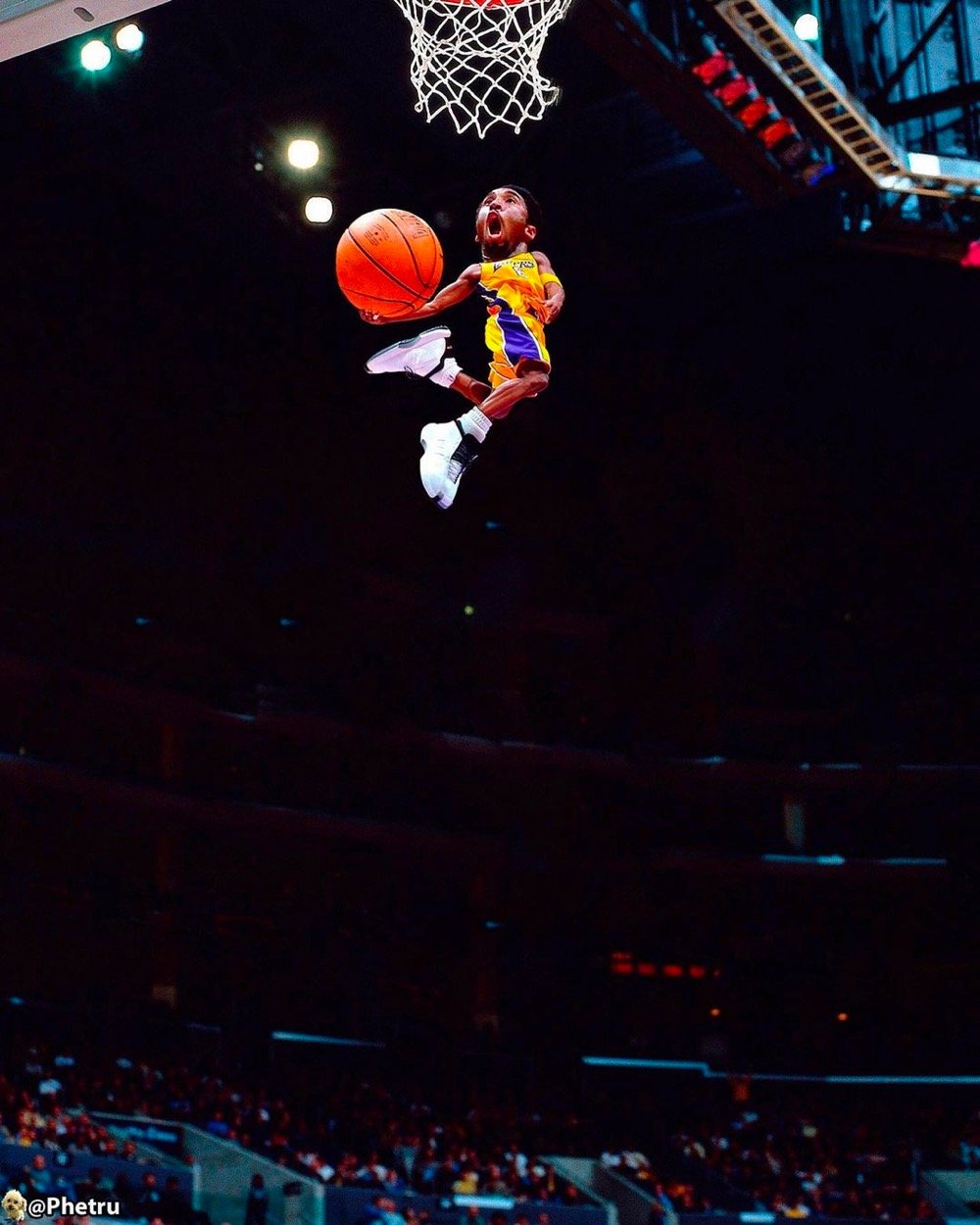
I am a little bit obsessed with Phetru’s miniaturized soccer stars (along with the occasional other sports stars or celebrities, like Kobe above or Emma Raducanu) — they’re like bobbleheads come to life. It was tough picking out just 3 or 4 to feature…each successive photo was funnier than the last.
Which famous old people could identify Nintendo’s Mario? “Not only does Rushdie know who Mario is, but also Luigi and, I don’t think this is too much of a stretch, Yoshi, Bowser, and the Koopalings.”
The Library of Misremembered Books
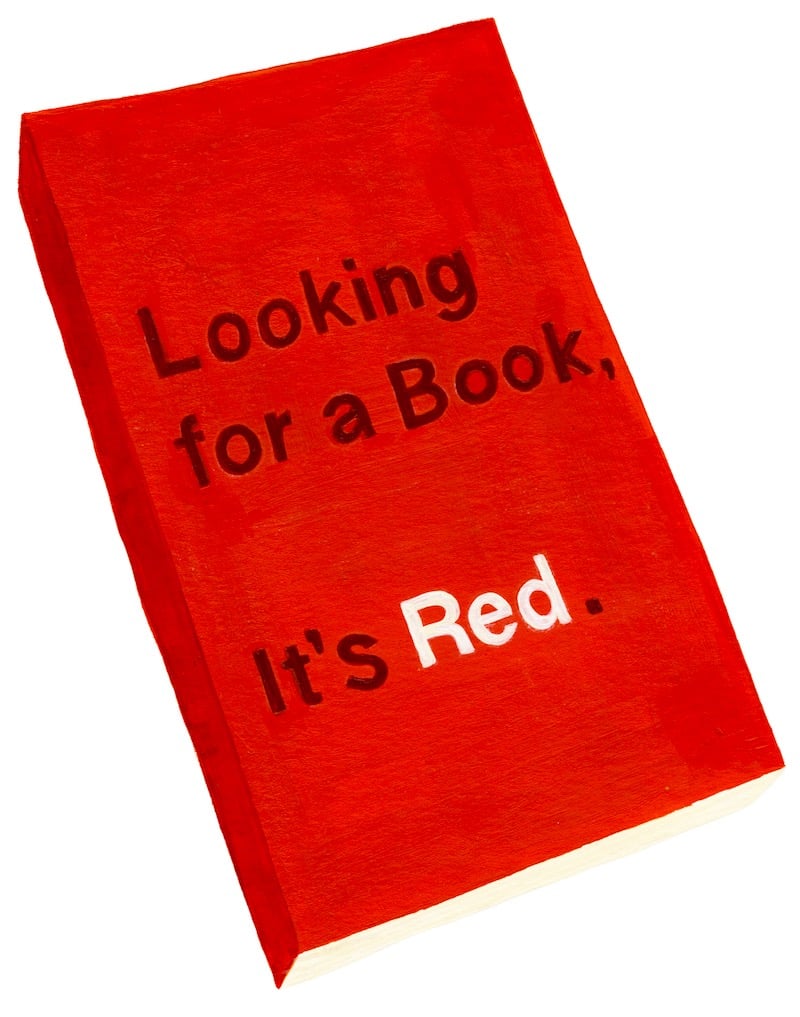
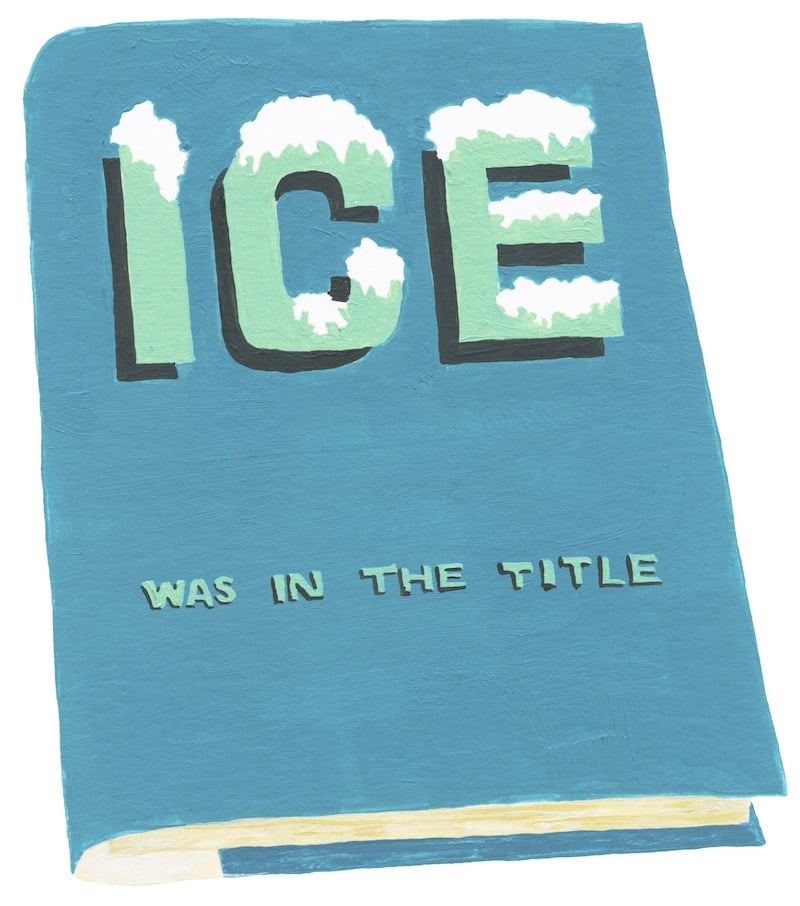

In her new book Library of Misremembered Books, Marina Luz creates new book covers from the vague and hilarious ways in which people can’t recall the exact names of books.
Anyone who has worked in a bookstore knows only too well that moment when a customer approaches by saying, “So I don’t remember the title, or the author, but-.” And we’ve all been on the other side of the counter, trying to pinpoint something we can’t quite describe at a bookstore (“It’s a murder mystery, but also quite funny”), or at a video store (“Could be subtitled, but then again, now that I think about it, maybe it wasn’t”), or at a mechanic (“The car is kind of going gu-chunk, gu-chunk; except on hills, when it’s more of a clickety-tickety”). We are usually left not only without an answer, but also with the overwhelming sense that we have lost some small piece of our dignity in the attempt.
See also (via this thread) a list of misremembered titles from the Fukui Prefectural Library in Japan. (via literary hub)
These 4 charts explain why the stakes are so high at the U.N. climate summit. “The world is not on track to avoid extreme climate change.”
It’s Membership Time!

Hey folks, it’s time for the annual unpleasantness: me telling you about kottke.org’s membership program. Five years ago I introduced the kottke.org membership program so that folks reading the site could directly support my efforts here, and it’s been wonderfully successful. Or to put it another way, without that member support, this site would not exist. Thanks to those members for keeping this site free for everyone to read!
Why wouldn’t it exist? The online advertising market for small sites like this sucks (especially for non-vertical sites) and I’ve nearly stopped linking to Amazon, losing the corresponding affiliate revenue that comprised 15-20% of my total annual revenue. Poof, gone. As much as I like linking to Bookshop.org instead, the revenue from their affiliate program has only filled a tiny bit of that absence. Member support is far and away the thing that’s keeping me going here.
I know these are ųŋųʂųąƖ ɬıɱɛʂ and that can make it tough to support things like non-essential websites. If you can’t swing it right now, please don’t! And don’t worry about it. If you’re currently a member worried about your finances and a refund of this year’s membership amount would help out, send me an email and let’s make that happen. But if you find value in this site and can manage it, I’d appreciate you supporting the site with a membership, especially if you’re someone who values the switch to Bookshop.org and that the advertising on the site is both minimal and relevant. And if you’re already a member and want to remain so (or even to bump up your membership level), maybe log in to check your status — it’s easy for a credit card to expire and you miss the email…
For the past 7-8 years, this Weird Internet Career has felt precarious, dependent on the whims of massive companies that don’t give a shit about individual creators. Facebook and Google sucked up all the online advertising revenue several years ago, Amazon has marginalized their affiliate program, Medium has changed their business model more times than I can count, Substack is going to run out of VC money to spread around at some point, and…I could go on. These companies have also made decisions that have angered and harmed their customers, employees, publishers, and even democracy. None of this provides the stability that small sites like mine need to exist in the world. After five years of the membership program, five years of support from readers like you, this feels stable and sustainable. It feels real and good. Thanks for giving a shit.
Note: I’ve been writing some version of this post for five years now and there’s only so many ways to tell the same story, so I reused bits from last year’s post for this one. Just wanted to let you know in case you were feeling some deja vu.
Japan’s Best Mundane Halloween Costumes for 2021
It’s become a tradition in Japan to dress up in mundane costumes that depict everyday situations for Halloween and once again Johnny Waldman of Spoon & Tamago has collected some of the best and most creative efforts for 2021. Here are a few favorites. “Guy who leans in as his Mario Kart character turns a curve” (I am 100% this guy when I play):

“That person who showed up for the free trial lesson”:

“That cashier who looks away as you enter your debit PIN”:

“Girl who started decluttering but ended up on her phone”:
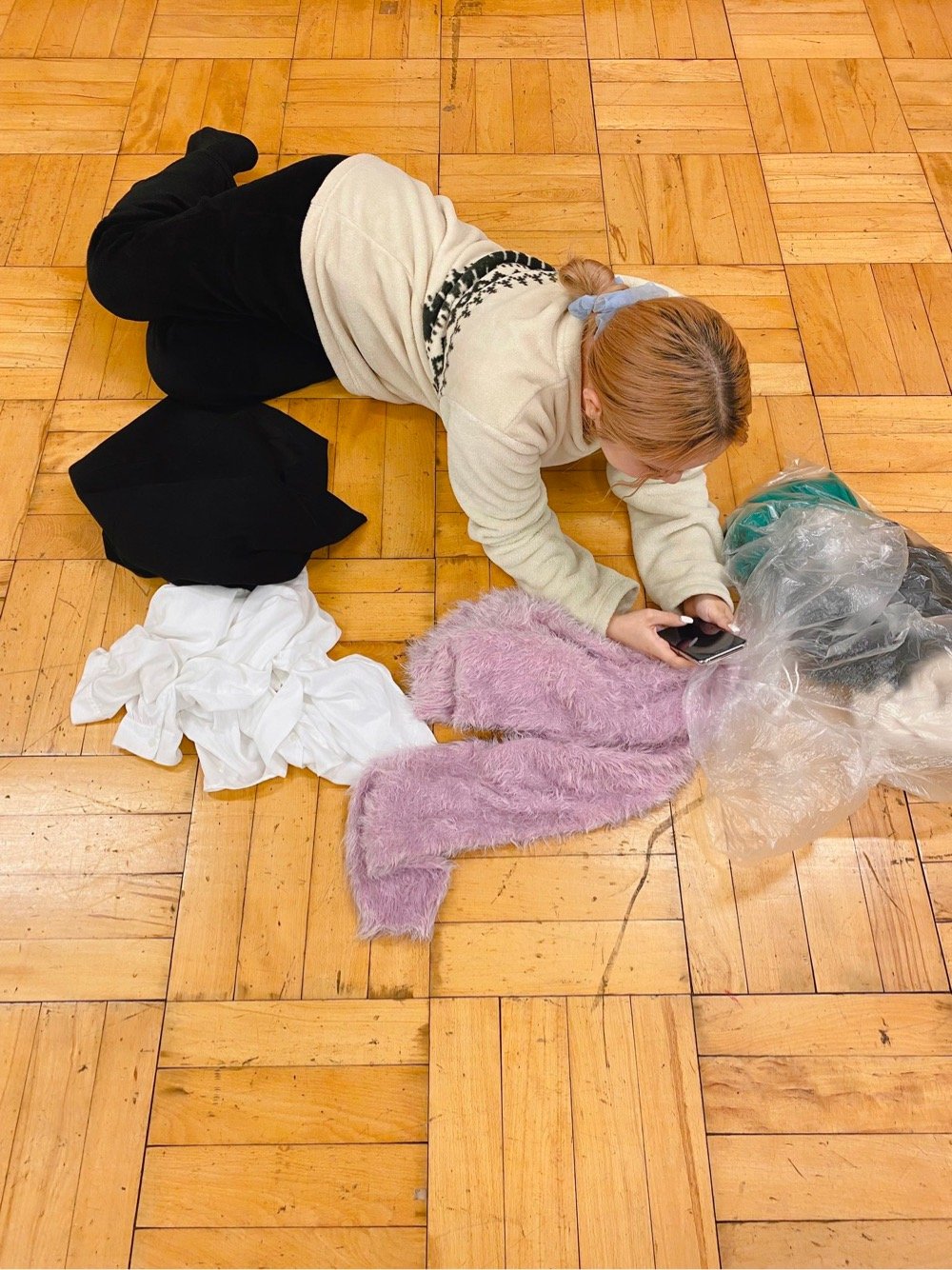
You can see the rest here or check out the costumes from 2019 and 2020.




Stay Connected